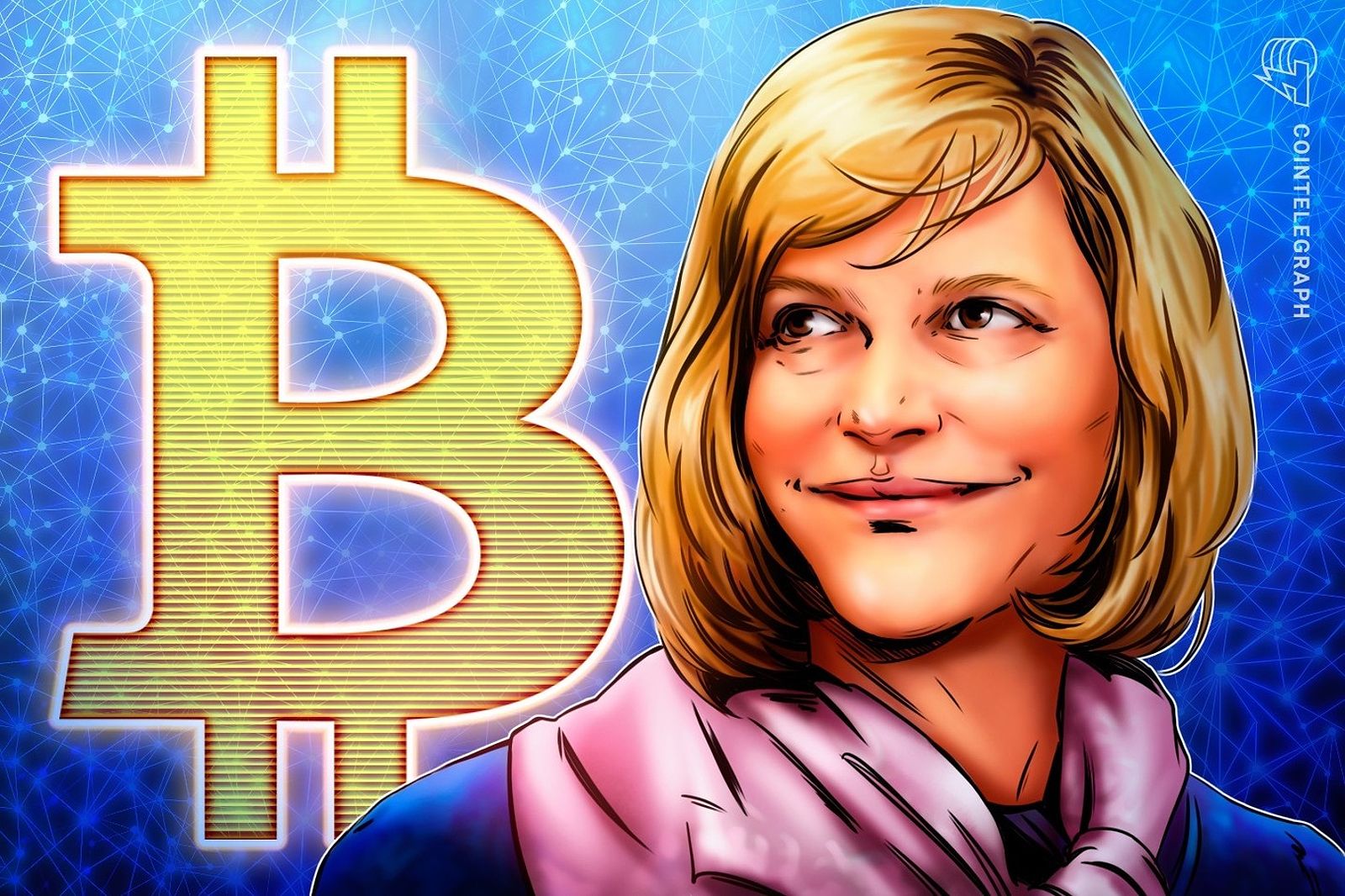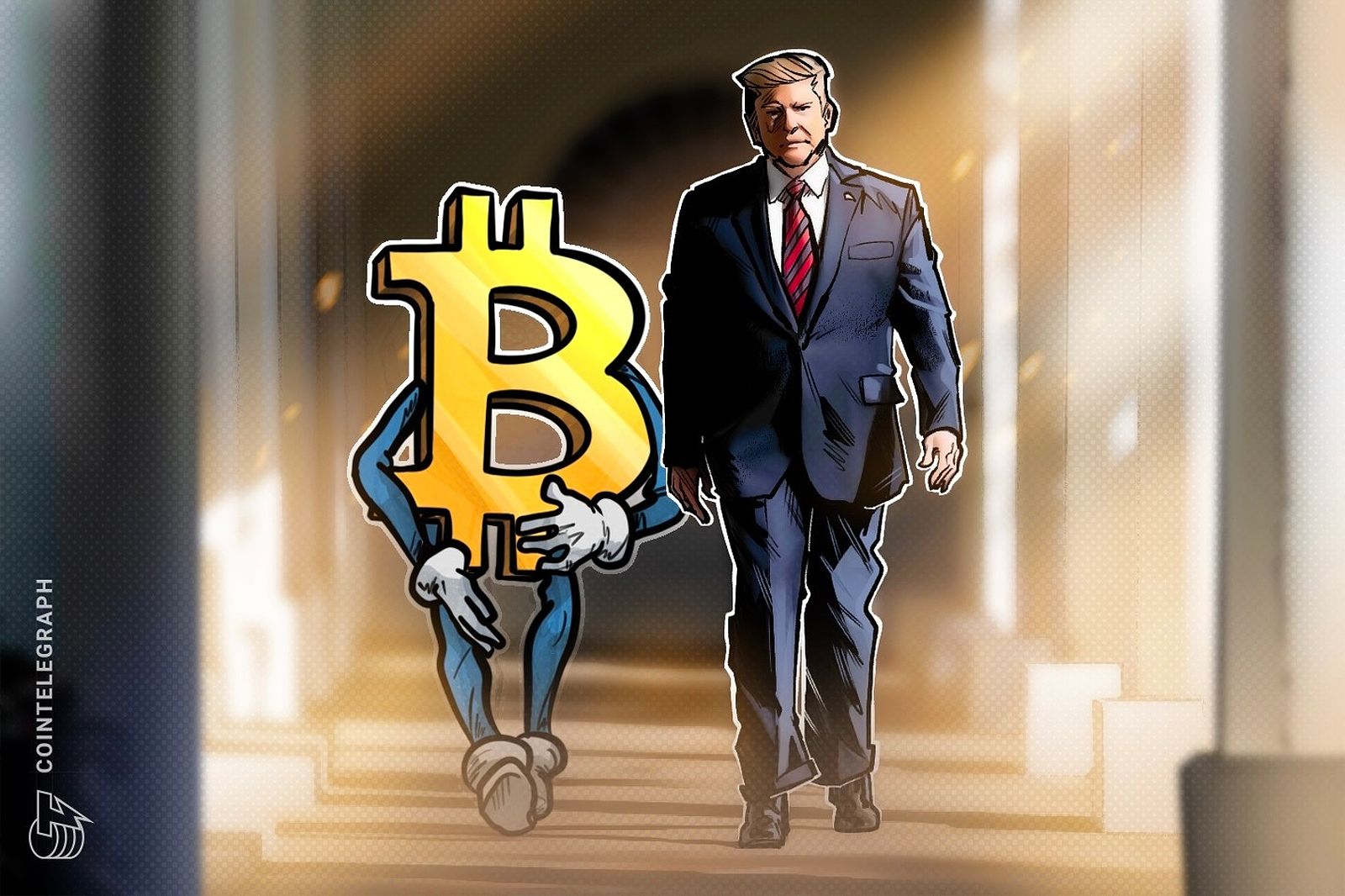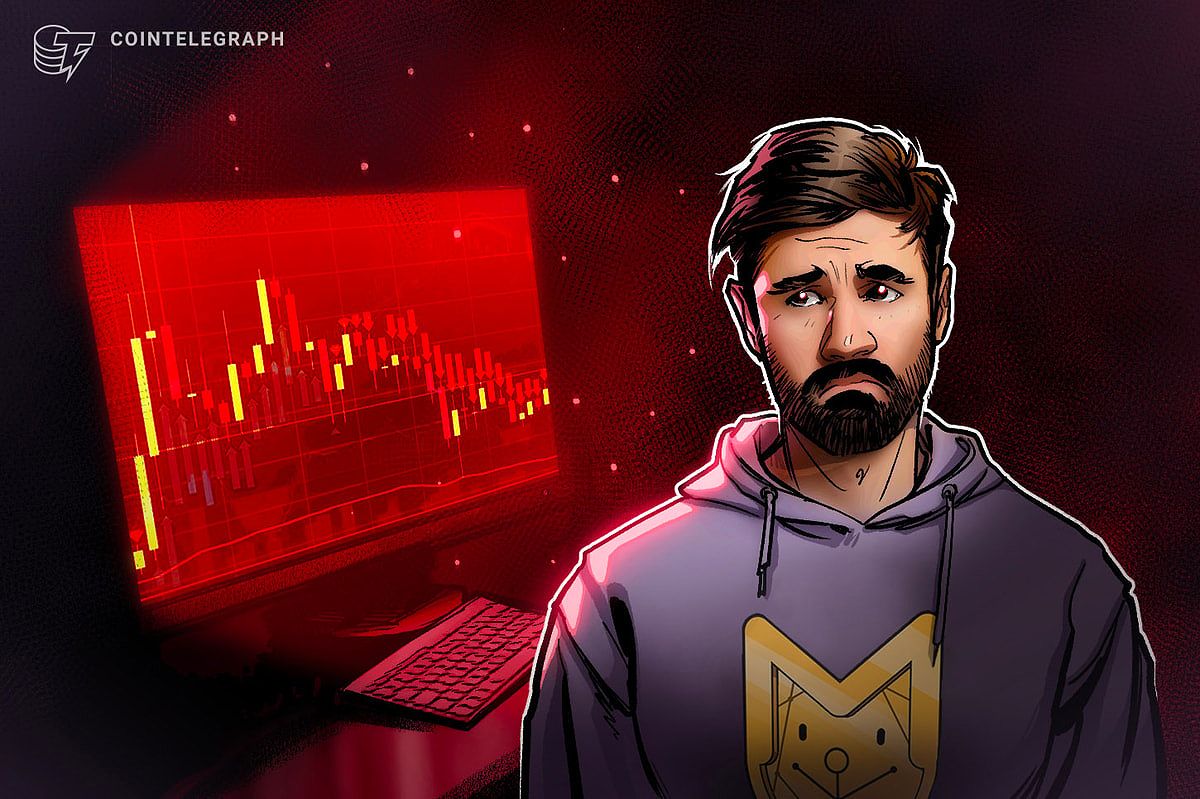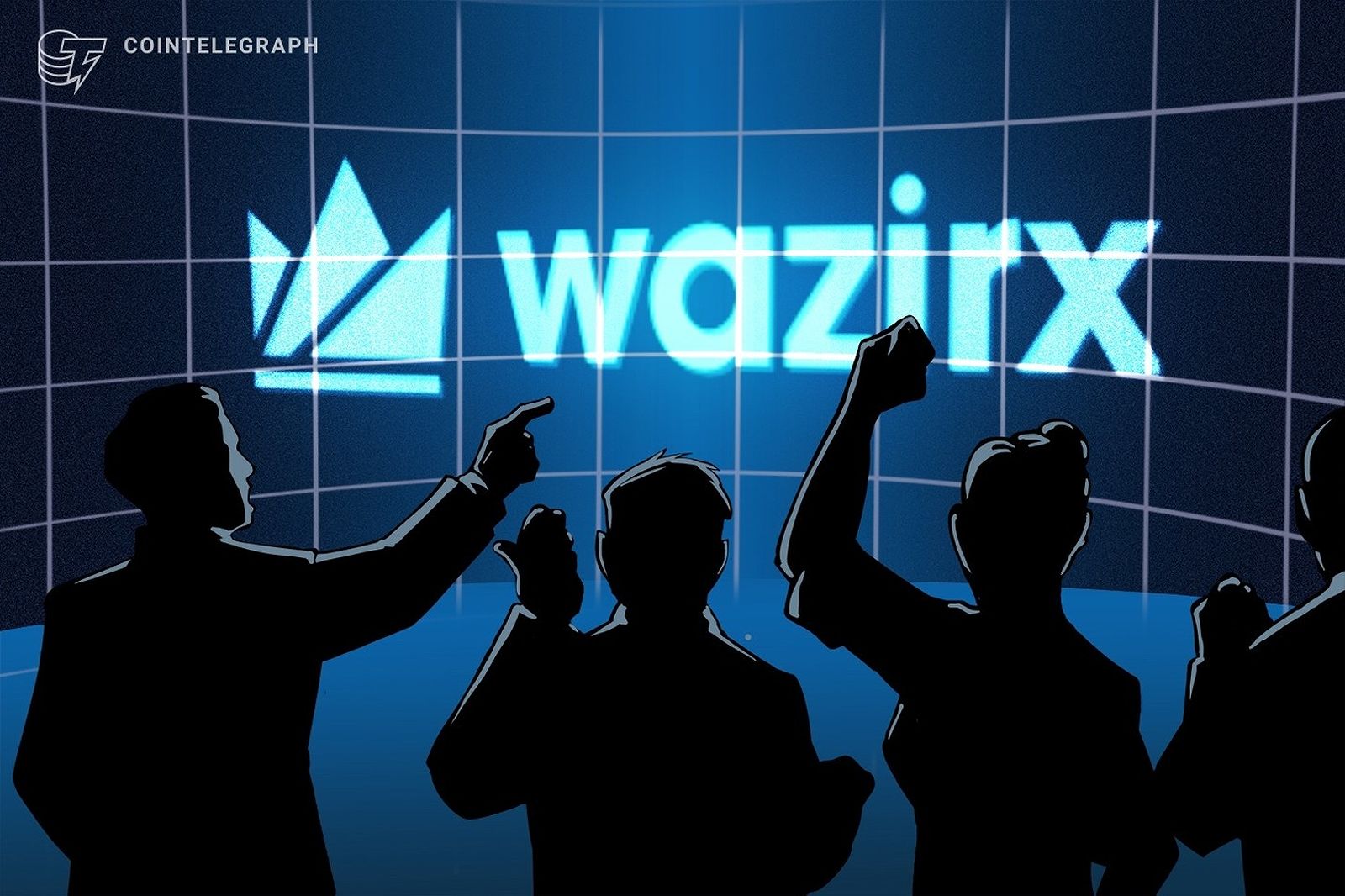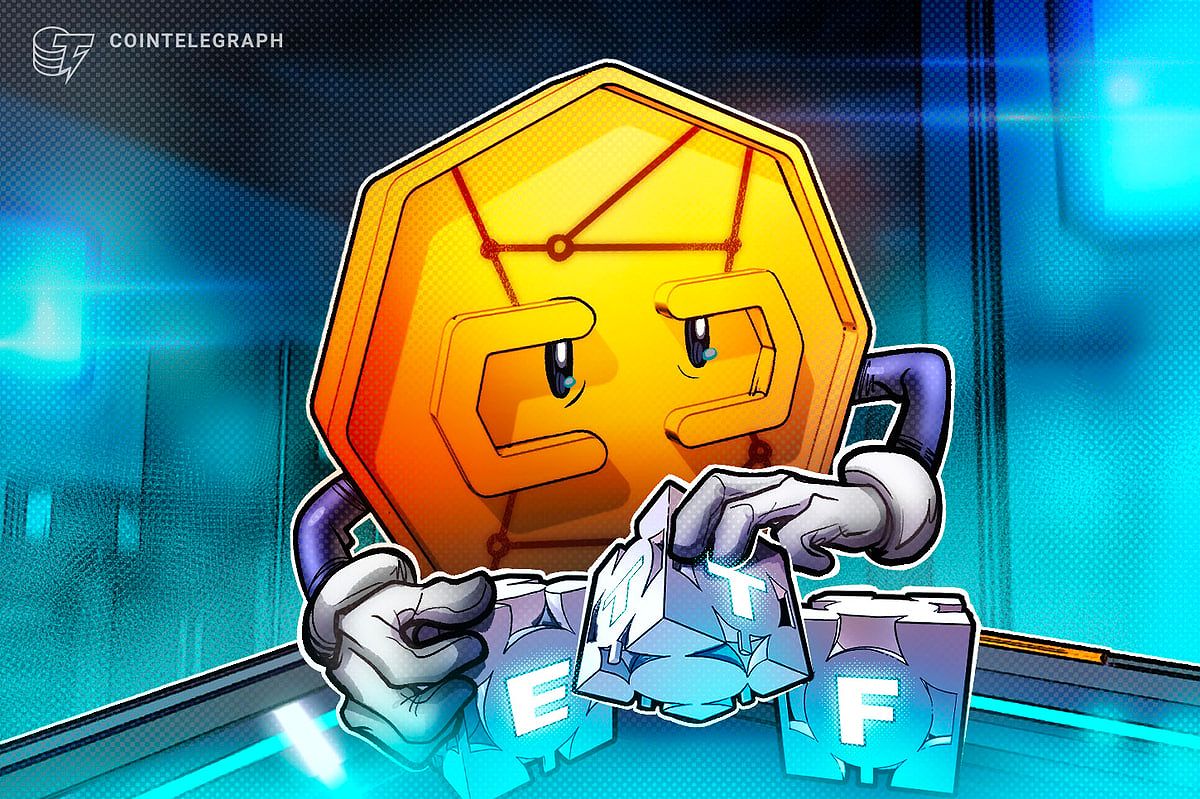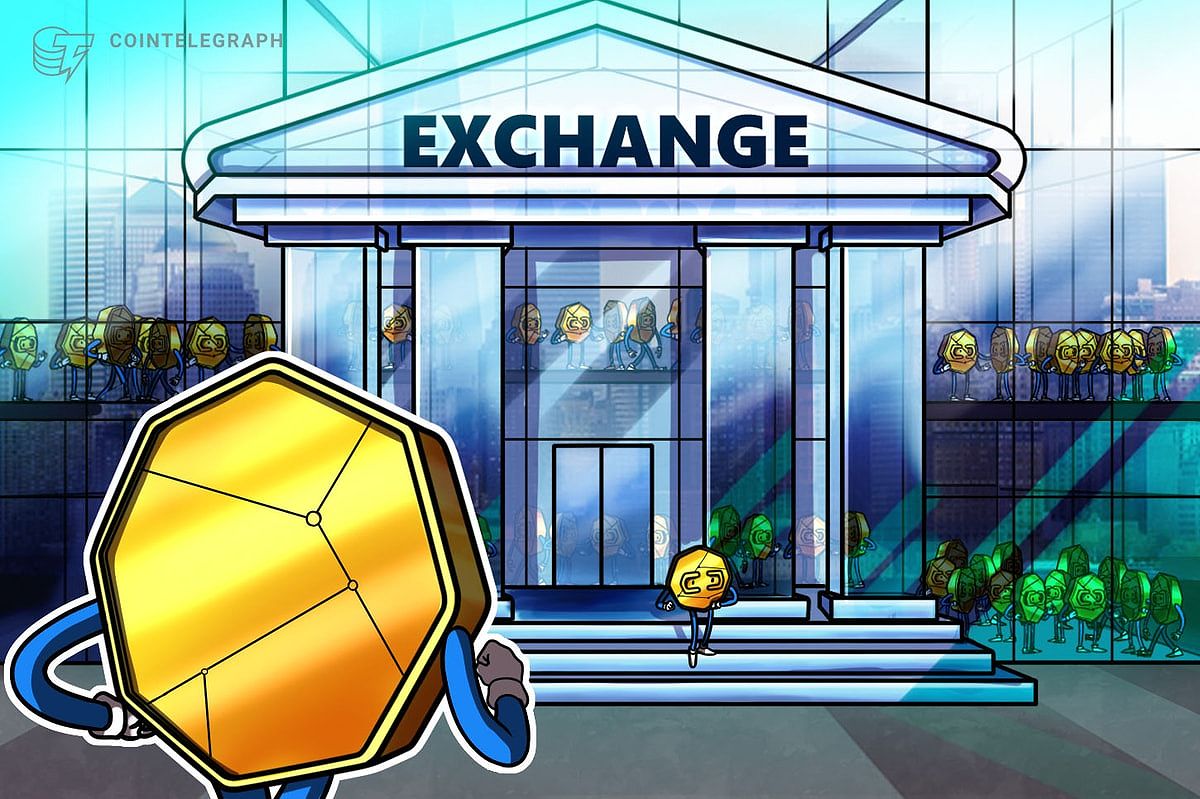TBPAY – Smarter investments to help you achieve financial freedom
Discover, create and grow financial management software for the future of crypto investments.
Rated 5 stars by 10,000+ users
★★★★★
All: ▲ 33.3%
80%
Average
+ $2,473.65
Performance
Quarter 🔻
Expenses
$123,456
Income
$654,321
Profit
+ $530,865
Trusted by industry leaders:
Features and benefits
The all-in-one solution for digital banking
See why over 10,000 people trust TBPay to manage their finance, crypto and online banking.
Trading Tools
At TBPay, traders gain access to a robust array of trading instruments, diverse indicators and drawing tools.
Passive Income
TBPay presents multiple avenues for users to generate passive income from their cryptocurrency assets.
Automated Invest
Through TBPay’s auto-invest feature, users can craft personalized investment strategies.
Competitive Fee
TBPay boasts highly competitive trading fees, commencing as low as 0.1% for spot trades.
Buy, sell and trade digital assets the smarter way
Spend less time managing your finances and more time doing the things you enjoy.
No risk money back guarantee
100m
Annual profit
300 +
5 star review
33b
Average increase
10k
Happy customers
testimonials
Hear what people are saying about us
Discover, create and grow financial management software for the future of crypto investments. Read more in our financial blog.
★★★★★
Simply amazing product for digital banking and trading crypto. Thank you for creating this platform.
Adam smith
★★★★★
The best fit for new guys like me in crypto. Easy to use and navigate, so much information and instruction.
Helena Zhao
★★★★★
I fell for this wallet’s future margin and long shot. More private than Binance and users’re more friendly.
Tim Sr.
★★★★★
They have an outstanding CS service which was so elaborate and patient to help me with my payment.
Ken Vs
Real time analytics
Advanced tracking
Instant payouts
Usable data
Guaranteed returns
Real time analytics
Advanced tracking
Instant payouts
Usable data
Guaranteed returns
Real time analytics
Advanced tracking
Instant payouts
Usable data
Guaranteed returns
Easy to use platform
NFT collection
Smart banking
Crypto wallet
User collaboration
Easy to use platform
NFT collection
Smart banking
Crypto wallet
User collaboration
Easy to use platform
NFT collection
Smart banking
Crypto wallet
User collaboration
FAQs
Frequently asked questions
How do I join TBPay?
Welcome to TBPay! Kickstart your crypto journey in 4 quick and easy steps HERE
How to withdraw crypto on the TBPay website?
Step 1: Log into your TBPay account and hover over the wallet symbol.
Step 2: You will be redirected to the withdrawal page.
Step 3: Select a network.
Step 4: If the exchange or platform does not support the token, please choose another network.
Step 5: Enter your withdrawal amount.
How do you make $100 a day on TBPay?
Step 1: Get Started on TBPay.
Step 2: Select the appropriate coins.
Step 3: Formulate a trading strategy.
Step 4: Begin with a Small Investment.
Step 5: Develop your risk management skills.
Step 6: Remain informed and adapt.
Step 7: Use your experience to learn.
Step 8: Patience and Persistence.
What do I need to know before using TBPay?
To extend your account limitations, you must first register an account and then complete a verification process. Funding Your Account Prior to trade, you must fund your TBPay account. TB accepts a variety of cryptocurrencies as deposits, including Bitcoin, Ethereum, and Litecoin.
How can I withdraw my money from TBPay directly to my bank account?
To withdraw funds from TBPay to your bank account, follow these steps: 1. Log in to your account and navigate to the “Wallet” area.2) Click “Fiat and Spot” and then “Withdraw.”
Can I earn daily from TBPay?
With TBPay, it is achievable to make $60 per day, but it’s crucial to remember that there is no surefire method to achieve this. There’s always a chance of losing money with cryptocurrencies because they’re a volatile asset type.
Is TBPay suitable for novices?
TBPay is a well-known digital asset exchange with features and benefits suited to both novice and experienced traders, including novices. Our blog will provide an in-depth look at how to begin your journey on this platform, as well as crucial factors that will help you maximize your trading success.
How long do TBPay deposits and withdrawals take?
Withdrawals and deposits might take minutes to hours to complete, depending on the currency and network congestion. After completing a transaction on TBPay, you can check the status in your account’s “Transaction History” section.
Can I keep money on TBPay?
TBPay is one of the safer exchanges when compared to others. So, if you’re actively trading cryptocurrency and need to keep it on an exchange, TBPay is a rather secure option. However, if you intend to hold substantial quantities of cryptocurrency for an extended period of time, a private hardware wallet may be a better option than an exchange.
Is TBPay 100% safe?
TBPay is usually regarded as one of the safest cryptocurrency exchanges around. It has adopted stringent security features, including as two-factor authentication (2FA) and offline storage capabilities. However, TBPay has already experienced a number of security breaches as there is no trading platform can guarantee 100% safe currently.
You need more help? Talk to our team →
Anita Dunn: A Strategic Shift from the White House
Anita Dunn has been a fixture in the Biden administration, wielding considerable influence as a senior advisor during his first term. Her recent departure from the White House is particularly striking given the current climate of escalating regulatory scrutiny facing the crypto industry. Dunn’s prior engagement in a crypto roundtable, where she interacted with both industry representatives and lawmakers, underscored the administration’s evolving approach to the sector. Yet, her transition to the Future Forward PAC raises critical questions about her potential role in shaping future crypto policy.
Future Forward PAC: A Double-Edged Sword for Crypto The Future Forward PAC has long been associated with supporting Democratic candidates, particularly Harris. Notably, the PAC’s previous acceptance of funds from the now-infamous Sam Bankman-Fried of FTX fame casts a shadow over its crypto affiliations. This historical connection raises important issues about the potential ramifications of crypto donations on the political landscape as the 2024 elections loom. The interplay between political financing and regulatory stances could create a precarious environment for the future of crypto governance.
The Landscape of Crypto Regulation: Navigating Uncertainty
Dunn’s new position within the Future Forward PAC could have significant implications for the evolution of crypto regulation, especially if Harris ascends to the presidency. Her wealth of experience and nuanced understanding of the crypto ecosystem could steer the administration’s regulatory framework in ways that might benefit the industry. However, this potential influence must be viewed through a lens of skepticism. The intersection of political contributions and regulatory decisions could lead to conflicts of interest that undermine the integrity of the regulatory process.
Conclusion
Anita Dunn’s shift to a pro-Harris Super PAC is not merely a career move; it represents a pivotal moment that could reshape the future of crypto regulation. Her background in the White House and engagement with the crypto community suggest she possesses valuable insights into the industry’s potential. However, the implications of her new role raise valid concerns about the interplay of political contributions and regulatory integrity. As the crypto community observes these developments, the stakes for the future of digital assets remain high, inviting critical examination of the forces at play in shaping the regulatory environment. […]
Why Consider a US Bitcoin Reserve?
The idea of a U.S. Bitcoin reserve isn’t just a wild fantasy dreamt up by crypto enthusiasts; it’s gaining traction among policymakers who see Bitcoin as more than just digital magic beans. Advocates point to Bitcoin’s limited supply—like a fancy limited-edition collectible that’s only going to get rarer—and its decentralized nature, which could make it a solid alternative to traditional reserve assets, like gold. Plus, there’s the added bonus of blockchain technology, which could jazz up the U.S. financial system, making it snappier and more secure.
The Good, the Bad, and the Bitcoiny Now, let’s get into the nitty-gritty of what a U.S. Bitcoin reserve could mean for the economy. On the upside, if the government were to adopt Bitcoin, it might crank up demand for the digital currency, sending its price soaring like a rocket. And who wouldn’t want to see the U.S. dollar strut its stuff with a newfound swagger against other currencies? A Bitcoin reserve could also spark innovation and economic growth, like a shot of espresso for the tech sector.
But, hold your horses! It’s not all sunshine and rainbows. Bitcoin is notoriously volatile—think of it like that unpredictable friend who swings from highs to lows faster than you can say “blockchain.” This volatility could rattle the stability of the U.S. financial system. Plus, traditional financial institutions might feel a bit threatened, as their established roles in the global economy could be turned upside down. And let’s not forget the elephant in the room: Bitcoin’s energy consumption and its environmental footprint. That’s a conversation that definitely needs to happen.
Is a US Bitcoin Reserve Even Possible?
Now, let’s tackle the practical side of things. Setting up a U.S. Bitcoin reserve isn’t just about waving a magic wand and hoping for the best. It involves some serious logistical wizardry. First off, the government would need to figure out how to acquire and securely store a mountain of Bitcoin. We’re talking about high-tech storage solutions and top-notch cybersecurity measures to keep those digital coins safe from prying eyes (or hackers with ill intentions).
Creating a solid regulatory framework is also crucial. Without it, managing a Bitcoin reserve could be like herding cats—chaotic and messy. Transparency, accountability, and compliance with existing financial regulations are must-haves. And let’s be real, if the government wants to keep its Bitcoin stash safe, it’ll need to invest in some serious cybersecurity measures. Advanced encryption and strict access controls? Yes, please!
Wrapping It Up
The idea of a U.S. Bitcoin reserve is a complex puzzle with many pieces that need to fit together just right. While the potential perks of diversifying the nation’s reserve assets and boosting financial efficiency are tempting, the risks tied to Bitcoin’s volatility and the pressing need for a solid regulatory framework can’t be brushed aside. As this conversation continues to evolve, financial analysts and economists will need to keep a close eye on how this bold idea unfolds. Who knows? It could be the start of a whole new chapter in the world of finance, or just another intriguing “what if” scenario. Either way, it’s worth keeping an ear to the ground! […]
Pyxtrial Unveiled: A Comprehensive Look at Its Functionality
At its essence, Pyxtrial is not merely a theoretical concept; it represents a sophisticated system crafted to enhance the transparency and reliability of the stablecoin market. By utilizing a blend of blockchain technology and established financial practices, Pyxtrial serves as a data-centric solution. It meticulously gathers and analyzes data from a variety of sources, including blockchain networks, stablecoin platforms, and the issuers themselves. This information undergoes a thorough verification process to ensure that the reserves backing these stablecoins are accurately represented.
The Ripple Effect of Pyxtrial: A Delicate Balance of Transparency and Oversight The ramifications of Pyxtrial are profound, with the potential to redefine the landscape of the stablecoin market. On one side, it holds the promise of enhanced transparency, which could instill greater confidence among investors, ultimately leading to broader adoption and improved liquidity. On the flip side, however, the introduction of Pyxtrial may also usher in a new era of regulatory scrutiny. This could impose additional compliance requirements on issuers and raise legitimate concerns about the privacy of sensitive data.
The Path Ahead for Pyxtrial: Fostering Collaboration for Progress
The effectiveness of Pyxtrial hinges on the collaborative efforts of regulators, technologists, and stablecoin issuers. A well-structured regulatory framework is essential, one that carefully balances the need for transparency with the spirit of innovation. This framework must ensure that the system operates effectively without stifling the growth and potential of the stablecoin sector. Furthermore, prioritizing data security and privacy is critical, ensuring that confidential information is managed with the utmost care and responsibility.
Conclusion
In summary, Pyxtrial marks a significant leap toward enhanced transparency and accountability within the stablecoin ecosystem. While the advantages it offers are clear, its ultimate success will rely on thoughtful implementation and continuous collaboration among all involved parties. As the landscape of stablecoins continues to transform, the role of Pyxtrial in guiding its future development will be vital. The intersection of technology and finance is ripe with potential, and Pyxtrial stands as a promising harbinger of what is possible when innovation meets responsibility. […]
The Imperative for Scalability: Ethereum’s Pressing Challenge
The existing framework of Ethereum struggles to keep pace with the surging transaction volume. This congestion manifests as extended transaction confirmation times and inflated gas fees, both of which detrimentally affect user experience and stymie the development of intricate applications. The escalating popularity of Ethereum underscores the urgent need for solutions capable of accommodating its growing user base and the relentless demand for its services.
A Comprehensive Approach to Ethereum’s Scalability Solutions Tackling the scalability conundrum facing Ethereum necessitates a diverse strategy, incorporating a range of innovative solutions.
Sharding: Segmenting the Network for Enhanced Efficiency
Sharding represents a pivotal strategy that partitions the Ethereum network into smaller, concurrent processing units known as shards. Each shard is responsible for a fraction of the transactions, effectively distributing the workload across the network. This method of parallel processing greatly amplifies transaction throughput, facilitating quicker confirmation times and alleviating congestion.
Layer-2 Scaling Solutions: Diverting Computations for Greater Efficiency
Layer-2 scaling solutions present an alternative by transferring computations from the primary Ethereum chain to auxiliary networks. These solutions operate in conjunction with the main chain, utilizing various mechanisms to bolster scalability. Notable examples include Optimistic Rollups, Zero-Knowledge Rollups, and State Channels, each offering unique benefits in terms of speed, cost, and security.
Mitigating Miner Extractable Value (MEV): Promoting Fairness in Transaction Handling
Miner Extractable Value (MEV) pertains to the ability of miners to prioritize and rearrange transactions within a block, often to extract profits at the expense of other users. This practice can create inequitable scenarios and disrupt the intended sequence of transaction execution. To counteract MEV, a variety of strategies are being employed, including block builders and MEV auctions, with the goal of fostering a more just and transparent transaction environment.
Selecting the Optimal Scalability Solution: Guidance for Developers
Determining the right scalability solution for a project hinges on multiple factors. Developers must evaluate the specific demands of their application, including required throughput, security considerations, and budgetary constraints. Additionally, the technical expertise of the development team and the compatibility with existing tools and infrastructure are critical elements that must be taken into account.
The Path Forward for Ethereum Scalability: A Developer’s Roadmap
The roadmap for Ethereum’s scalability is in a state of continuous evolution, with ongoing research and development efforts dedicated to enhancing the network’s capabilities. Future upgrades, such as the anticipated “Pectra fork” and the integration of Verkle trees, promise to further refine transaction efficiency and minimize storage demands. These advancements will lay the groundwork for a more scalable and resilient Ethereum ecosystem, empowering developers to create increasingly sophisticated and innovative applications.
Conclusion
The scalability challenges that Ethereum faces are a fundamental aspect of its ongoing development. A comprehensive understanding of the various solutions being implemented is crucial for blockchain developers aiming to build applications that fully utilize the network’s capabilities. As Ethereum progresses, developers will play an indispensable role in shaping its future, ensuring its sustained success in the decentralized ecosystem. […]
Understanding the Regulatory Environment
In recent years, the French financial authorities have taken significant steps to regulate the cryptocurrency market. Their efforts have resulted in the introduction of stringent rules for cryptocurrency exchanges, mandating that these platforms register as Digital Asset Service Providers (DASPs). The overarching aim of this regulatory push is to safeguard investors and uphold the market’s integrity by establishing clear operational standards. However, this rigorous environment has led some exchanges to reassess their commitment to the French market, prompting them to withdraw their services.
Consequences for French Cryptocurrency Investors The withdrawal of an exchange can have far-reaching effects on investors. Those who have accounts with the exiting platform may find themselves facing restrictions, such as an inability to open new trades or deposit additional funds. Existing positions might need to be closed, and users may be required to withdraw their funds within a specified timeframe. It’s crucial for investors to stay alert and understand how these changes could impact their financial strategies and investment portfolios.
Adapting to a Changing Market
In light of these developments, it is essential for investors to take a proactive stance. Researching and selecting exchanges that are reputable and compliant with French regulations is vital for ensuring a secure trading environment. By choosing regulated platforms, investors can mitigate risks and enhance their trading experiences. Moreover, staying informed about ongoing regulatory updates is key to making sound investment decisions in this dynamic landscape.
The Future of Cryptocurrency Trading in France
Looking ahead, the trajectory of cryptocurrency trading in France is likely to be influenced by continued regulatory efforts. The goal remains to create a robust framework that fosters innovation while simultaneously protecting investors. As regulations evolve, investors must be vigilant and adaptable, ready to revise their strategies in response to new developments.
Conclusion
The recent withdrawal of a major cryptocurrency exchange from the French market underscores the importance of remaining informed about the shifting regulatory landscape. For investors in France, the priority should be on utilizing reputable and regulated exchanges to ensure a safe trading environment. By comprehending the nuances of these changes and making well-informed choices, investors can successfully navigate the complex world of cryptocurrency trading in France. […]
Understanding the Growing US Debt Crisis
For decades, the national debt of the United States has been on a relentless upward trajectory, driven by rampant government spending and persistent deficit financing. The alarming pace at which this debt accumulates—often in the trillions each year—raises serious concerns about inflation, interest rates, and the overall health of the economy. As this financial burden expands, the government finds itself in a tight spot, facing difficult decisions that could jeopardize essential services and hinder economic growth.
Bitcoin: A Possible Answer to the National Debt Problem? In light of these challenges, Bitcoin has emerged as a potential beacon of hope for addressing the national debt crisis. Its distinct characteristics—decentralization, a capped supply, and deflationary traits—could provide innovative solutions to the pressing issues associated with the ever-increasing debt.
The Implications of Bitcoin on National Debt
Bitcoin’s deflationary nature may offer a stabilizing effect on the value of the US dollar. With a finite supply, Bitcoin tends to appreciate over time, which could counteract the inflationary pressures that arise from excessive national debt. Furthermore, Bitcoin’s limited availability might serve as a safeguard against inflation, helping to preserve asset value and mitigate the risk of diminishing purchasing power.
Navigating the Challenges of Bitcoin in Addressing National Debt
Despite the promise that Bitcoin holds, its potential as a remedy for national debt is not without significant hurdles. The cryptocurrency’s notorious price volatility could introduce uncertainty and risk into the equation for the government. Additionally, the murky waters of regulatory frameworks surrounding Bitcoin could pose obstacles to its widespread acceptance and integration into the financial landscape. There are also pressing concerns regarding the potential misuse of Bitcoin for illicit activities, which must be carefully navigated before it can be embraced as a legitimate solution to the national debt crisis.
Conclusion
Bitcoin may represent a novel approach to confronting the daunting challenge of the US national debt, offering a decentralized and deflationary alternative to the traditional fiat currency system. However, the substantial hurdles related to its volatility, regulatory ambiguity, and the risks of misuse cannot be overlooked. A thorough examination and further research are essential to fully comprehend the implications and possible advantages of utilizing Bitcoin in the fight against the escalating national debt. As the country grapples with its financial future, the conversation around Bitcoin’s role continues to evolve, demanding attention and thoughtful consideration. […]
The Evolution of Memecoins: A Historical Perspective
Memecoins emerged as an unexpected twist in the cryptocurrency narrative, capturing the imagination of investors and internet users alike. Their genesis can be traced back to Dogecoin, a cryptocurrency that originated from a popular meme, combining humor with digital currency in a novel way. The initial allure of memecoins stemmed from their community-centric approach and the tantalizing prospect of rapid financial gains, propelled by social media trends and viral marketing. Dogecoin’s meteoric rise paved the way for a plethora of other memecoins, with Shiba Inu quickly becoming a notable player in this arena. This initial phase attracted a diverse array of investors—those looking for quick returns as well as those drawn to the whimsical nature of these coins.
Memecoin Market Dynamics: Understanding Value Influencers The memecoin market has been marked by significant fluctuations in recent months, reflecting broader trends in the cryptocurrency ecosystem. A myriad of factors contribute to this volatility, including shifts in the overall crypto market, trading volumes, sentiment on social media platforms, and significant news events. The recent decline in the cryptocurrency market has undeniably impacted memecoins, leading to a contraction in their market capitalization and stirring uncertainty among potential investors.
Evaluating Memecoin Investments: Balancing Risks and Rewards
Investing in memecoins is not a straightforward endeavor; it necessitates a nuanced understanding of both the possible rewards and the inherent risks. While these coins can yield impressive returns, particularly in bullish market conditions, they also come with substantial volatility and the potential for steep losses.
Advantages: Significant Return Potential: During bullish trends, memecoins can offer impressive profit margins, attracting speculative investors.
Innovative Projects: Some memecoins are linked to groundbreaking technologies or initiatives that may gain traction in the future, offering early adopters a chance to capitalize on their growth.
Community Engagement: The communal aspect of memecoins fosters a sense of belonging and active participation among investors, enhancing the overall experience. Disadvantages: Severe Price Volatility: The prices of memecoins can experience wild swings, complicating the prediction of their future performance.
Speculative Nature: Many memecoins lack fundamental value, relying predominantly on speculation and market hype, which can lead to abrupt price corrections.
Risk of Fraud: The memecoin sector is rife with scams and ‘rug pulls,’ where developers abandon projects, leaving investors with devalued tokens.
Limited Practical Applications: Many memecoins struggle to establish real-world utility, raising concerns about their long-term viability in the market. Conclusion
The landscape of memecoins remains fraught with uncertainty and volatility. Although they present opportunities for substantial returns, investors must approach this market with a cautious mindset and a comprehensive understanding of the risks involved. Diligent research, strategic analysis, and a grounded perspective on market dynamics are essential for navigating the complexities of memecoin investments. As the cryptocurrency world continues to shift, the prudent investor must remain informed and adaptable to the ever-changing tides of this speculative market. […]
The Quantum Challenge to Cryptography
Quantum computers, with their unparalleled computational prowess, present a formidable challenge to traditional cryptographic systems that have long been the bedrock of cryptocurrency security. Central to this concern is Shor’s algorithm, a quantum computing breakthrough that enables the efficient factoring of large integers. This capability threatens to dismantle the very foundations of public-key cryptography—specifically RSA and Elliptic Curve Cryptography (ECC)—which are vital for safeguarding digital signatures and facilitating secure key exchanges. Should quantum machines achieve sufficient power, the consequences could be dire: they might easily decipher the private keys that protect crypto wallets, leading to a potential gold rush for cybercriminals.
Entering the Era of Post-Quantum Cryptography In response to the quantum onslaught, the field of post-quantum cryptography (PQC) is gaining momentum. This innovative wave of cryptographic algorithms is engineered to withstand the assault from quantum adversaries. Unlike their classical counterparts, these algorithms hinge on complex mathematical problems that are believed to resist both classical and quantum computational methods. Notable examples include: Lattice-based cryptography: By exploiting the intricacies of mathematical lattices, this approach crafts robust cryptographic frameworks.
Code-based cryptography: Utilizing error-correcting codes, this method ensures that secure communication remains intact even in the face of quantum threats.
Multivariate cryptography: This strategy is rooted in the challenge of solving systems of multivariate polynomial equations, presenting a significant hurdle for potential attackers. The Crypto Sector’s Proactive Stance Against Quantum Risks
The crypto industry is not idly watching the quantum threat unfold; rather, it is actively mobilizing to fortify its defenses. Ongoing research and development efforts are pivotal in refining PQC algorithms, while standardization initiatives are essential for ensuring that these new methods can be seamlessly integrated across various platforms. Institutions like the National Institute of Standards and Technology (NIST) and the Internet Security Research Group (ISRG) are at the forefront of this standardization movement, striving to establish a common framework for PQC algorithms. Numerous cryptocurrency projects and organizations are also exploring these quantum-resistant solutions, demonstrating a collective commitment to enhancing security in an uncertain future.
Rethinking the Future of Crypto Security in a Quantum World
The emergence of quantum computing is not merely a technical challenge; it heralds a seismic shift in the paradigm of crypto security. The industry must adapt, embracing PQC solutions not just as a temporary fix, but as a foundational element of its long-term strategy. The landscape of cryptographic practices may soon give rise to entirely new paradigms that harness the unique attributes of quantum mechanics. However, one must exercise caution; complacency in the face of such profound change could prove disastrous. Continuous investment in research and development is essential to stay ahead of evolving threats.
Conclusion
The reality of quantum computing’s threat to cryptocurrency security is both pressing and profound. The crypto industry must not only acknowledge this challenge but also actively engage with post-quantum cryptography as a critical component of its security framework. Embracing quantum-resistant solutions is not merely a strategic choice; it is an imperative for the sustainability of digital assets in an age where quantum capabilities are on the horizon. The future of crypto security hinges on a commitment to innovation and resilience in the face of disruptive change. […]
The Consequences of Exchange Hacks on Investors
When a cryptocurrency exchange falls victim to a cyberattack, the fallout extends far beyond the immediate financial losses. Such incidents can significantly undermine trust in the entire ecosystem, deterring potential investors and leading to market volatility. For many individuals, the loss of their investments—often accumulated through hard work and savings—can be devastating. The psychological impact of such events can linger, fostering a sense of insecurity in a market that is already perceived as high-risk.
Identifying Security Flaws: A Call for Improvement Cryptocurrency exchanges are attractive targets for hackers due to the vast amounts of digital currency they manage. The industry is rife with security vulnerabilities that can be easily exploited, including weak user passwords, outdated software systems, and insufficient security protocols. There is a pressing need for the crypto sector to adopt more stringent security measures to protect user funds and deter future attacks.
Strategies for Investors to Secure Their Digital Holdings
In the aftermath of these alarming breaches, it becomes imperative for investors to take proactive measures to safeguard their digital assets. A diversified portfolio spread across multiple exchanges can mitigate risk, as can the implementation of strong passwords and multi-factor authentication. Additionally, using cold storage solutions for more valuable assets can provide an added layer of security. These strategies are not just recommendations; they are essential practices for anyone serious about protecting their investments in an increasingly volatile environment.
The Importance of Regulatory Frameworks in Enhancing Security
Regulatory oversight is crucial in establishing a safer crypto environment for investors. Clear and robust regulatory frameworks can compel exchanges to adhere to high security standards, thereby enhancing consumer protection. While self-regulation within the crypto community has its merits, it is evident that external oversight is vital for maintaining investor confidence and ensuring the integrity of the market.
Conclusion
The threat of cryptocurrency exchange hacks is a stark reality for investors navigating this digital landscape. However, by understanding the associated risks and implementing effective security measures, individuals can better protect their digital assets. The combination of a vigilant approach to security and a supportive regulatory environment is essential for fostering a secure and resilient cryptocurrency ecosystem. As the industry continues to evolve, the commitment to enhancing security and protecting investors will determine its future viability. […]
How the Chip Delay Affects AI Progress
The postponement of this cutting-edge chip isn’t just a minor hiccup; it has the potential to create a chain reaction affecting various AI projects. Companies that rely heavily on these chips for their AI infrastructure may now find themselves grappling with delays in their initiatives, which could stall the launch of new products and services. Moreover, researchers may need to rethink their strategies and timelines, as the unavailability of critical hardware could slow down research and development efforts significantly.
The Bubble Talk: Is Generative AI Overrated? This delay has ignited a heated debate regarding the viability of the generative AI industry. Some experts caution that the sector might be on the verge of a “bubble,” fueled by inflated expectations and valuations that may not reflect reality. They point to the steep costs associated with AI development, the scarcity of practical applications for existing AI models, and the risks of misuse or unintended consequences that come with powerful technologies.
Conversely, proponents of generative AI argue that the field is brimming with potential. They believe that the current challenges are merely growing pains, and that AI could fundamentally transform industries, enhance efficiency, and tackle complex issues that have long plagued society. This ongoing debate underscores the importance of maintaining a balanced perspective on the opportunities and challenges that generative AI presents.
Navigating the Future of the AI Chip Market
The impact of this chip delay extends beyond immediate project setbacks; it could reshape the competitive dynamics within the AI chip market. The leading company’s hold on the market might face challenges if other firms seize the opportunity to innovate and release their own advanced AI chips. The landscape of the AI chip market will be influenced by a relentless pursuit of more powerful and efficient chips, alongside the emergence of new applications and use cases that could redefine what AI technology can achieve.
Conclusion
In summary, the delay of this advanced AI chip has sparked significant concerns regarding the future of generative AI development. While the immediate effects may pose challenges for the industry, it’s crucial to remember that AI is a dynamic field, constantly evolving with immense potential. The trajectory of generative AI will depend on the relentless pursuit of technological advancements, the discovery of novel applications, and the ethical implementation of AI solutions that aim to benefit society as a whole. As the industry navigates these turbulent waters, the hope remains that such setbacks will ultimately lead to stronger foundations for future innovations. […]
Tracing the Path of a Strategic Alliance
The journey of the Microsoft-OpenAI partnership commenced in 2019, marked by a significant financial commitment from Microsoft, which secured its position as the exclusive cloud service provider for OpenAI. This initial investment laid the groundwork for the seamless integration of OpenAI’s pioneering technologies into Microsoft’s product offerings, particularly through the incorporation of GPT-4 into services such as “Copilot” and “Bing.” Over time, this strategic collaboration has deepened, merging resources and expertise in ways that challenge the conventional definitions of investor and investee. However, the partnership has not been without its hurdles, including notable leadership transitions at OpenAI in 2023, where Microsoft’s involvement played a pivotal role in stabilizing the organization.
Regulatory Challenges and Antitrust Scrutiny As Microsoft and OpenAI continue to assert their influence in the AI sector, they have attracted the scrutiny of regulators on a global scale. Concerns have emerged regarding the potential for this partnership to inhibit competition and establish a monopolistic entity within the AI market. Antitrust inquiries are currently underway across the UK, EU, and US, with regulators examining the implications of this collaboration on competitive fairness, data privacy, and market dominance.
Weighing Risks and Opportunities for Investors
The Microsoft-OpenAI partnership offers a mixed bag of risks and opportunities for investors. On one hand, the looming prospect of regulatory intervention could alter the partnership’s trajectory, possibly resulting in fines or constraints that may impact Microsoft’s financial health and its future endeavors in AI development. Additionally, this heightened scrutiny could stimulate increased competition from other AI entities, posing challenges to Microsoft’s prevailing status. Conversely, the collaboration holds the potential to elevate Microsoft to a leading position in the AI landscape, fostering innovation and generating new revenue avenues. Microsoft’s robust cloud infrastructure could emerge as a vital platform for AI services, further consolidating its standing in the industry.
Future Considerations: Key Factors to Monitor
The outlook for the Microsoft-OpenAI partnership hinges on several pivotal elements, including the pace of AI advancements, regulatory outcomes, and the rise of new competitors. The emergence of innovative AI technologies could fortify the partnership, while regulatory decisions may significantly influence its direction. Moreover, the entry of new players into the AI marketplace could further complicate Microsoft’s competitive landscape, necessitating vigilance and adaptability.
Conclusion
In summary, the partnership between Microsoft and OpenAI marks a significant evolution in the AI sector, presenting both notable opportunities and inherent risks. Investors must navigate the complexities of the regulatory environment, competitive dynamics, and ongoing technological advancements when assessing the potential impact of this partnership on their investment strategies. As the future of this collaboration—and the broader AI landscape—remains uncertain, it is imperative for investors to stay informed and agile in response to the latest developments. […]
Defining Ethereum Staking
At its core, Ethereum staking is a mechanism that allows individuals to lock up their ETH in order to support the Ethereum blockchain. This process is critical for maintaining network integrity and facilitating transaction validation. In exchange for staking their ETH, participants receive rewards, typically in the form of additional ETH. This can be likened to providing a loan to the network, where the interest earned serves as a return on investment.
The Mechanics of Ethereum Staking Engaging in staking requires participation in the Ethereum Beacon Chain, which is the backbone of transaction validation and network security. Participants must select a validator—essentially a computer running Ethereum software—to whom they will delegate their ETH. By doing so, they contribute their resources to the overall network operation. In return for this contribution, stakers earn a share of the transaction fees and other incentives generated by the network.
Selecting a Staking Platform
When it comes to staking Ethereum, individuals can choose between two primary types of platforms: Regulated Exchanges: These platforms provide an intuitive user experience and are governed by regulatory bodies, which can enhance security. However, they often come with higher fees and may limit users’ control over their staked ETH.
Decentralized Finance (DeFi) Protocols: Offering lower fees and greater autonomy, these platforms allow users more control over their staked assets. Nevertheless, they typically face less regulatory scrutiny and may present a heightened risk of security vulnerabilities. Evaluating the Risks of Ethereum Staking
While the prospect of staking can be enticing, it is imperative for participants to recognize the associated risks: Slashing: Should a validator act improperly, stakers may incur losses on their staked ETH. This risk can be mitigated by opting for reputable and well-established validators.
Impermanent Loss: Significant fluctuations in ETH’s price during the staking period could lead to potential losses. This risk is often lessened by adopting a long-term holding strategy for ETH.
Platform Risk: There exists the possibility of hacks or security breaches on the selected platform. This risk can be minimized by choosing platforms that have demonstrated a strong security history. Conclusion
Ethereum staking offers a unique avenue for earning rewards while contributing to the network’s operational security. However, it is essential for potential stakers to thoroughly understand the inherent risks and select platforms with a solid reputation. By carefully evaluating personal investment objectives and risk tolerance, individuals can make informed decisions regarding their participation in Ethereum staking. […]
Decoding Bitcoin’s Recent Slide
Bitcoin’s value has taken a noticeable dip, stirring unease among investors. Various elements contribute to this decline, including global economic challenges, increasing regulatory scrutiny, and evolving market sentiments. The overarching worries about inflation and rising interest rates have significantly affected investors’ willingness to take risks, prompting a sell-off of higher-risk assets like cryptocurrencies. Furthermore, the crypto sector is facing heightened regulatory pressures, which have only added to investor trepidation and market volatility. Shifts in investor sentiment and risk tolerance are also pivotal in influencing price changes.
The Ripple Effect on Altcoins Bitcoin’s price fluctuations often cast a long shadow over the performance of alternative cryptocurrencies, or altcoins. This correlation arises from a tendency for investors to gravitate toward perceived safe assets during turbulent times. When Bitcoin’s value declines, many investors tend to retreat from altcoins, causing a cascade of falling prices across the board. The latest downturn in Bitcoin has notably affected the altcoin market, with some cryptocurrencies facing steeper declines than others, reflecting their vulnerability to Bitcoin’s performance.
Technical Insights: Identifying Key Support and Resistance Points
Engaging in technical analysis can yield crucial insights into price movements and future trends. By scrutinizing historical price patterns, traders can pinpoint significant support and resistance levels—key price points where buying or selling pressure is expected to be strong. For Bitcoin, evaluating moving averages, such as the 20-day Exponential Moving Average (EMA) and the 50-day Simple Moving Average (SMA), can help forecast these pivotal levels. Additionally, the Relative Strength Index (RSI) serves as a valuable tool for assessing whether an asset is overbought or oversold. Through these analyses, traders can glean a deeper understanding of current market sentiment and potential price reversals, paving the way for informed decision-making.
Charting the Path Ahead: Market Forecasts and Expert Perspectives
Forecasting the trajectory of Bitcoin and altcoins is no small feat, as it hinges on a myriad of factors, including macroeconomic trends, regulatory changes, and shifts in investor sentiment. Some industry experts are cautiously optimistic, suggesting a potential short-term recovery, while others maintain a more reserved outlook regarding the long-term prospects. The future landscape of the cryptocurrency market will depend on a confluence of influences, urging investors to weigh potential risks against opportunities as they navigate their investment choices.
Conclusion
The recent decline in Bitcoin’s value has undoubtedly cast ripples throughout the cryptocurrency market, resulting in a broader sell-off of altcoins. This downturn stems from a complex interplay of factors, including global economic uncertainties, regulatory challenges, and evolving investor sentiments. While technical analysis offers valuable insights into potential market movements, accurately predicting the future of cryptocurrencies remains a daunting task. Investors are encouraged to stay informed about market trends, engage in thorough research, and evaluate their risk tolerance carefully before making any investment decisions. By doing so, they can better navigate the ever-changing landscape of digital currencies and harness the potential of new technologies shaping our financial future. […]
What’s Behind Bitcoin’s Ups and Downs?
So, what makes Bitcoin’s price dance like nobody’s watching? It’s a mix of factors that keep the market on its toes. First up is market sentiment, which is essentially the mood of the investors. One moment everyone’s riding high on optimism, and the next, a single tweet can send prices tumbling. Regulatory uncertainty is another key player. Governments around the globe are still trying to figure out how to deal with cryptocurrencies, and their decisions can cause ripples—or tidal waves—in the market.
Then there’s the adoption game. When big businesses and institutions jump on the Bitcoin bandwagon, demand skyrockets, sending prices soaring. But if the hype fizzles out? Well, you get the picture. And let’s not forget the technical mumbo jumbo, like CME gaps and liquidations, which can add an extra layer of chaos to the already unpredictable landscape.
Tips for Surviving Bitcoin’s Bumpy Journey Navigating the choppy waters of Bitcoin requires more than just a lucky charm. It calls for some solid strategies to keep those nerves in check. One approach is dollar-cost averaging. This fancy term just means investing a set amount of money at regular intervals—no matter if the price is up or down. Over time, this can help smooth out those pesky price fluctuations.
Another smart move? Diversification. Spread your investments across different assets, including other cryptocurrencies. It’s like not putting all your eggs in one basket—because, let’s face it, nobody wants a scrambled portfolio.
Stop-loss orders can also be a lifesaver. These nifty little tools automatically sell your Bitcoin if it drops to a certain price, helping you avoid those gut-wrenching losses. And for the long-haulers, adopting a patient perspective can pay off. Focus on Bitcoin’s potential and underlying value rather than getting swept up in every price dip and rise.
Spotting Golden Opportunities Amidst the Chaos
Now, let’s flip the script a bit. While volatility can be nerve-wracking, it also opens doors for savvy investors. Technical analysis is like your trusty compass in this turbulent sea. By studying charts and indicators, investors can spot potential trends and price patterns that might give them an edge.
On the flip side, fundamental analysis digs deeper into Bitcoin’s real value and adoption rates. Keeping an eye on the news—be it regulatory updates or major adoption announcements—can provide critical insights into potential price movements. Knowledge is power, after all, and staying informed can help investors make better decisions.
Conclusion
Bitcoin’s volatility might be a rollercoaster ride, but it’s one that many are eager to take. By grasping the factors that fuel these price swings, employing risk management strategies, and honing in on potential opportunities, investors can navigate this wild market with a bit more confidence. It’s all about staying in the loop, doing thorough research, and crafting a solid investment strategy. After all, in the world of Bitcoin, being prepared is half the battle. So, hold on tight and enjoy the ride! […]
Delving into Brain-Computer Interfaces
At their core, BCIs represent a compelling fusion of neuroscience and engineering, a domain where the intricate workings of the human brain can be translated into digital commands. These interfaces detect the brain’s electrical signals—essentially, the brain’s silent language—and convert them into actions, such as moving a cursor or even restoring mobility in paralyzed individuals. This remarkable capability raises the question: while such technology offers tantalizing possibilities, does it also come with unforeseen consequences that could reshape our very essence?
The Allure of Enhanced Abilities The horizon of BCIs is not limited to therapeutic applications; it stretches into the realm of cognitive enhancement. Imagine a world where individuals can augment their memory, acquire new skills at a staggering rate, or experience reality through a multifaceted sensory lens. Such advancements could redefine what it means to be human. However, amidst the thrill of these prospects lies an unsettling reality: the ethical quagmire of enhancement technology. Is it wise to pursue capabilities that could widen the chasm of inequality?
Ethical Dilemmas: A Necessary Discourse
The advent of BCIs brings forth a host of ethical dilemmas that warrant rigorous examination. Foremost among these is the question of privacy. If a device can interpret thoughts, who holds the keys to that information? The specter of misuse looms large, and the potential for creating a society stratified by access to cognitive enhancements cannot be ignored. As BCIs evolve, a robust ethical framework must accompany their development, prioritizing societal equity and human dignity over mere technological advancement.
The Uncertain Future of Brain-Computer Interfaces
As we stand on the precipice of a new era in human-computer interaction, the future of BCIs is a tapestry woven with promise and uncertainty. While the rapid pace of technological innovation suggests that BCIs will soon be a commonplace aspect of life, we must approach this evolution with a critical eye. What safeguards will be in place to ensure these technologies are harnessed for the collective good rather than individual gain?
The journey into the realm of BCIs is not just about unlocking new capabilities; it is also about navigating the ethical labyrinth that accompanies such profound change. As society grapples with these questions, it is crucial to foster a dialogue that challenges the prevailing narratives surrounding technology and its role in our lives. Conclusion
Brain-computer interfaces symbolize a fascinating yet precarious frontier in the ongoing evolution of humanity. While they hold the potential to enhance our abilities and redefine our understanding of cognition, the ethical implications are complex and cannot be overlooked. As we venture into this uncharted territory, it is imperative to balance the excitement of innovation with a steadfast commitment to ethical responsibility. The challenge lies not just in what BCIs can do, but in ensuring that their integration into society enhances the human experience rather than diminishes it. The future is uncertain, but it is a conversation we must engage in earnestly, lest we lose sight of what it truly means to be human. […]
Altcoin ETFs: Charting New Territory in Investment
The cryptocurrency sector has experienced an unprecedented wave of interest, compelling investors to look beyond Bitcoin and Ethereum. Altcoins, which represent a variety of cryptocurrencies with distinct functionalities and potential uses, are increasingly attracting attention. The introduction of altcoin ETFs presents a streamlined and accessible method for investors to diversify their portfolios and tap into this burgeoning asset class.
Navigating the Regulatory Landscape The regulatory environment surrounding altcoin ETFs is in a state of flux, with the Securities and Exchange Commission (SEC) at the forefront of this evolution. The SEC’s primary mandate is to safeguard investors from market manipulation and ensure the reliability of the underlying markets. However, this focus has resulted in significant hurdles for the approval of altcoin ETFs, primarily due to concerns regarding the absence of regulated trading platforms for many altcoins.
Weighing the Benefits and Risks for Client Portfolios
For financial advisors, altcoin ETFs present a dual-edged sword, offering potential rewards while also harboring notable risks. Understanding these dynamics is essential for guiding clients effectively.
Potential Benefits: Diversification: Altcoin ETFs enable investors to diversify their portfolios by incorporating a wider array of cryptocurrencies, which may help mitigate overall investment risk.
Ease of Market Access: These funds provide a straightforward and cost-efficient avenue for investors to engage with the altcoin market, which can otherwise be complex and challenging to navigate.
Expanded Investment Opportunities: For clients willing to embrace higher risk, altcoin ETFs offer a broader spectrum of investment choices, potentially capitalizing on the growth trajectories of various altcoins. Inherent Risks: Market Volatility: The cryptocurrency market is notorious for its volatility, and the prices of altcoins can experience dramatic swings, which may result in significant financial losses.
Regulatory Ambiguity: The rapidly changing regulatory framework surrounding cryptocurrencies can introduce uncertainty, potentially impacting the valuation of altcoin ETFs.
Fraud Vulnerability: The altcoin market is susceptible to fraudulent activities, necessitating a cautious approach from investors when considering altcoin ETFs. Assessing Client Suitability
Before recommending altcoin ETFs, financial advisors must undertake a meticulous evaluation of their clients’ risk tolerance, investment objectives, and overall financial health. It is imperative to conduct comprehensive due diligence on any proposed altcoin ETF, ensuring that it aligns with the client’s investment strategy and risk profile.
The Future of Altcoin ETFs: A Landscape of Opportunities and Challenges
While the future of altcoin ETFs remains uncertain, the potential for growth and innovation is substantial. The regulatory framework is expected to continue its evolution, potentially facilitating the approval of additional altcoin ETFs. Furthermore, the increasing interest from institutional investors in cryptocurrencies could further fuel demand for these investment vehicles.
Conclusion
Altcoin ETFs encapsulate a realm of opportunities and challenges for financial advisors and their clientele. They can offer diversification and a pathway to a potentially lucrative market, yet it is crucial to remain vigilant regarding the associated risks. By maintaining a keen awareness of the shifting dynamics surrounding altcoin ETFs and conducting thorough investigations, financial advisors can adeptly guide their clients through this intricate and potentially rewarding asset class. […]
The Bright Side of AI Detection: Keeping Academic Honesty in Check
AI detection tools have stepped onto the scene as a potential knight in shining armor for educators battling the ever-growing issue of plagiarism. By pinpointing AI-generated content, these tools can help ensure that students are putting in the effort and creativity required for their work. After all, who doesn’t want to encourage original thought and thorough research? However, there’s a catch—how effective are these tools really?
Imagine this: a student pours their heart and soul into a paper, only for it to be flagged as suspicious by an overly sensitive detection tool. Talk about a confidence killer! The accuracy of these tools is under scrutiny, especially when it comes to different writing styles and formats. Plus, let’s not forget the dreaded false positives that could lead to unwarranted accusations. Yikes! It’s a fine line between maintaining integrity and unintentionally making students feel like they’re under constant surveillance.
Ethical Dilemmas and the Educational Horizon As much as AI detection tools promise to uphold academic integrity, they also open the door to a few ethical head-scratchers. For starters, there’s the issue of privacy—what happens to the data collected on students? Are we trading student privacy for the sake of academic honesty? And then there’s the potential for these tools to overshadow the very skills that educators strive to cultivate: critical thinking, creativity, and problem-solving.
Educators need to tread carefully here. The fear of being caught using AI might just lead students to disengage from the learning process altogether. Instead of exploring new ideas or tackling writing challenges, they might take the easy way out, opting for shortcuts that could stifle their intellectual growth. It’s essential to strike a balance, ensuring that these tools don’t become a barrier to legitimate AI use, but rather a guide for students to navigate their learning journeys.
Conclusion
The world of AI detection tools in education is a complex one, filled with both promise and pitfalls. While they can play a role in enhancing academic integrity, they also raise ethical questions and could inadvertently hinder student engagement. As educators embark on this journey, it’s crucial for them to engage in thoughtful discussions about the responsible use of AI in education. By weighing the potential benefits against the drawbacks, they can prioritize student learning while navigating this new landscape with care and consideration. After all, education should be about fostering curiosity and growth, not creating a climate of fear. […]
What’s the Deal with the Bitcoin Death Cross?
So, what exactly is this death cross that everyone keeps talking about? Simply put, it’s a technical analysis pattern that occurs when the 50-day simple moving average (SMA) of Bitcoin’s price dips below the 200-day SMA. Think of the 50-day SMA as your trendy friend who keeps up with the latest fads, while the 200-day SMA is the wise old sage who has seen it all. When the younger average crosses below the elder one, it can signal a potential shift from a bullish vibe to a bearish one. Sounds scary, right? But hang on; it’s not the whole story.
A Look Back: Death Crosses in Bitcoin’s History Now, let’s take a little stroll down memory lane and examine what the death cross has meant for Bitcoin in the past. While many have associated this pattern with price declines, the results have been a mixed bag. In some cases, Bitcoin has actually experienced impressive price surges following a death cross. Yes, you heard that right! This suggests that while the death cross can be a useful tool in the trader’s toolkit, relying solely on it to predict future price movements is about as reliable as a weather forecast in April—prone to surprises!
What Else Affects Bitcoin’s Price?
Here’s where it gets interesting. The death cross is just one piece of a much larger puzzle when it comes to Bitcoin’s price movements. A whole host of factors can sway the market, including macroeconomic conditions, regulatory changes, market sentiment, and even how many cats your neighbor has (okay, maybe not that last one, but you get my point). For instance, interest rates and inflation can heavily influence how much risk investors are willing to take on. And let’s not forget about regulations—new laws can change the game overnight, impacting everything from market sentiment to the overall adoption of cryptocurrencies.
Keeping Your Cool in a Volatile Market
So, what’s the takeaway here? The death cross is certainly a notable technical indicator that has appeared in Bitcoin’s history, but its influence on price movements isn’t set in stone. While it might signal a potential shift in market momentum, it’s crucial to consider a broader array of factors when making investment decisions. Think of it as being in a relationship: communication is key, and understanding your partner (or the market, in this case) requires more than just one sign or signal.
Conclusion
In the ever-evolving landscape of cryptocurrency, the death cross can create a stir among investors, prompting them to rethink their strategies. However, it’s just one of many tools at our disposal for analyzing market trends. As we navigate this unpredictable world, it’s essential to contextualize the death cross within the larger framework of Bitcoin’s price dynamics. By doing so, we can better understand the interplay of various factors that shape Bitcoin’s trajectory. So, the next time you hear the phrase “death cross,” remember to take a deep breath, do your research, and keep a cool head. After all, the crypto market is full of surprises, and sometimes the scariest terms can lead to the most unexpected outcomes. […]
Amidst the buzz surrounding cryptocurrencies, a surprising statistic reveals that over 70% of investors remain unaware of the regulatory frameworks governing these digital assets. This gap in understanding highlights a critical need for financial advisors to educate themselves and their clients about the implications of investing in cryptocurrencies.
Imagine a financial advisor named Sarah, who recently attended a seminar on blockchain technology. She learned about the revolutionary potential of decentralized finance (DeFi) and how it could reshape traditional financial services. This breakthrough sparked her interest in advising her clients about the opportunities and risks associated with crypto investments, positioning her as a knowledgeable guide in this new landscape.
In the early days, cryptocurrencies were often dismissed as mere fads or speculative bubbles. Today, however, they are increasingly recognized as legitimate investment vehicles, prompting financial advisors to reevaluate their approach to client portfolios. Understanding this shift is crucial for those aiming to stay relevant in the evolving financial advisory landscape.
Consider a hypothetical scenario where a client approaches a financial advisor, eager to invest in cryptocurrencies but fearful of the volatility associated with them. This situation underscores the importance of a well-informed advisor who can demystify the crypto landscape, helping clients navigate their concerns while exploring potential investment opportunities.
What drives the rapid fluctuations in cryptocurrency values? This question often lingers in the minds of investors and advisors alike, hinting at the complexities that underlie the crypto market. Understanding these dynamics is essential for advisors who aim to provide sound investment advice to their clients.
Reflecting on the tumultuous events of 2020, one pivotal moment was the surge in Bitcoin’s value, which captivated the attention of both institutional and retail investors. This event not only legitimized cryptocurrencies in the eyes of many but also set the stage for financial advisors to engage with clients about the potential benefits and risks of crypto investments.
The crypto market’s evolution is not confined to finance alone; it intersects with technology, economics, and even social issues. Financial advisors must recognize this interconnectedness to provide comprehensive advice that considers the broader implications of crypto investments on their clients’ financial health.
Dispelling the common myth that cryptocurrencies are solely for tech-savvy investors is crucial. In reality, individuals from diverse backgrounds are exploring crypto investments. Financial advisors play a vital role in bridging this gap, helping clients understand that with the right knowledge and guidance, anyone can engage with this asset class.
The impact of cryptocurrencies varies widely across different demographics. For younger investors, crypto represents a new frontier of wealth-building opportunities, while older generations may view it with skepticism. Financial advisors must navigate these differing perspectives to tailor their advice and foster trust with their clients.
Understanding the Crypto Ecosystem
At the heart of this discussion is the crypto ecosystem itself, a complex web of technologies and concepts that can feel daunting. To effectively guide clients, it’s essential to grasp the fundamentals of this evolving landscape.
Cryptocurrencies are more than just digital currencies; they are assets that function on decentralized networks, free from the control of any single authority. Bitcoin stands as the pioneer, often regarded as the gold standard of cryptocurrencies, while Ethereum offers a robust platform for decentralized applications and smart contracts. Additionally, stablecoins—cryptocurrencies pegged to traditional fiat currencies—provide a semblance of stability, making them appealing for various financial transactions.
The underlying technology that enables this ecosystem is blockchain, a distributed ledger that securely records transactions across a network of computers. This technology not only ensures transparency but also enhances security, which is paramount in an industry often scrutinized for its potential risks.
Assessing Crypto Investment Opportunities As financial advisors, understanding the various investment avenues within the crypto space is vital. Each option presents its own blend of risks and rewards, making it essential to tailor advice to the unique needs of each client. Directly purchasing cryptocurrencies allows clients to take ownership of their digital assets, providing a sense of control. However, this route demands a certain level of technical expertise and security awareness. Clients must be prepared to implement robust security measures to safeguard their investments. Crypto exchange-traded funds (ETFs) offer a more accessible entry point, allowing clients to invest in a diversified basket of cryptocurrencies through a single fund. While this approach may come with higher fees, it provides a layer of convenience and reduces the complexity of managing individual assets. Crypto funds present a managed investment strategy. These funds can vary significantly in terms of management style and risk exposure, making it crucial for advisors to match clients with funds that align with their investment goals. The Regulatory Landscape and Considerations
The regulatory environment surrounding cryptocurrencies is a moving target, and staying informed is crucial for any financial advisor. Regulatory bodies like the US Securities and Exchange Commission (SEC) are actively shaping the landscape, and their guidelines influence how crypto investments are structured and marketed.
Understanding the implications of these regulations is essential for providing sound advice. The Financial Industry Regulatory Authority (FINRA) has also established guidelines that address key considerations such as disclosures and conflicts of interest, ensuring that advisors act in their clients’ best interests.
Furthermore, compliance with Anti-Money Laundering (AML) and Know Your Customer (KYC) regulations is vital for maintaining ethical standards in crypto transactions. Advisors must be diligent in verifying client identities and reporting any suspicious activities to mitigate risks.
Providing Crypto Investment Advice to Clients
Offering informed guidance on crypto investments necessitates a deep understanding of each client’s unique circumstances. Tailoring recommendations based on individual risk tolerance and investment objectives is paramount.
Before diving into specific investment strategies, advisors should engage clients in discussions to assess their financial situations, investment experiences, and risk appetites. This foundational knowledge allows for more personalized and effective advice.
Diversification remains a key principle in managing investment risk, and this holds true in the crypto realm as well. Encouraging clients to spread their investments across various cryptocurrencies and sectors can help cushion potential losses while exploring new opportunities.
Tax implications are another critical consideration. Advisors must educate clients about the tax consequences of their crypto transactions, including capital gains and losses, which can vary by jurisdiction. Providing guidance on tax reporting and planning can empower clients to make informed decisions.
Conclusion
Navigating the crypto landscape requires financial advisors to remain vigilant and well-informed about the evolving ecosystem, investment opportunities, and regulatory changes. By mastering the fundamentals of cryptocurrencies, blockchain technology, and various investment vehicles, advisors can equip themselves to offer clients informed and tailored guidance.
Ultimately, the journey into the world of cryptocurrencies is one of exploration and growth. By prioritizing client needs, managing risks effectively, and staying abreast of regulatory developments, financial advisors can foster trust and empower their clients to make confident investment decisions in this dynamic landscape. […]
However, hope is on the horizon with the advent of Ethereum’s layer-2 solutions. These innovative frameworks are set to transform the way transactions are processed, unlocking unprecedented scalability and efficiency within the Ethereum ecosystem. Once considered a niche solution for developers, layer-2 technologies are now recognized as pivotal to Ethereum’s evolution, marking a significant shift in our understanding of their potential to enhance network performance.
Consider the story of a small business owner who, after struggling with exorbitant transaction fees on Ethereum, discovers layer-2 solutions that allow for seamless and cost-effective transactions. This scenario not only illustrates the practical benefits of these advancements but also emphasizes their relevance in everyday life, empowering users to navigate the digital economy more effectively.
What if the key to Ethereum’s future success lies in the widespread adoption of layer-2 solutions? This question encapsulates the complexity of the issue, intertwining technical advancements with user behavior and market dynamics. A significant turning point in Ethereum’s journey occurred when developers began exploring layer-2 solutions to alleviate network congestion, signaling the dawn of a new era for the platform.
At first glance, layer-2 solutions might seem disconnected from traditional finance, but they are deeply intertwined with the evolution of digital currencies and the broader economic landscape. Understanding their implications is essential for grasping the future of financial systems.
Many individuals hold the misconception that Ethereum’s scalability issues are insurmountable. However, layer-2 solutions are challenging this notion by providing tangible strategies to enhance the network’s capabilities. Different stakeholders within the Ethereum ecosystem experience the impact of these solutions in various ways. For developers, they present a pathway to create more efficient applications, while users enjoy the benefits of lower fees and quicker transactions. This multifaceted impact highlights the transformative potential of these innovations.
Looking ahead, the future of Ethereum’s layer-2 solutions is filled with promise. As these technologies continue to mature, their capacity to reshape the landscape of decentralized applications and drive widespread adoption becomes increasingly clear. By tracing the evolution of layer-2 solutions, we can see how they have transitioned from theoretical concepts to practical tools that enhance Ethereum’s performance.
To better illustrate this, think of layer-2 solutions as a multi-lane highway designed to ease traffic congestion on a busy road. By providing alternative routes for transactions, they enable Ethereum to operate more efficiently, benefiting all users involved. In a real-world context, consider how a startup focused on decentralized finance navigates the complexities of Ethereum’s network. Layer-2 solutions significantly influence their decision-making processes, allowing them to optimize costs and enhance user experiences, underscoring their critical role in the ecosystem.
There are contrasting viewpoints regarding the effectiveness of layer-2 solutions in tackling Ethereum’s challenges. While some advocates assert that they are the key to achieving scalability, skeptics voice concerns about their long-term viability and security, creating a vibrant dialogue in the current landscape.
The broader implications of layer-2 solutions extend beyond Ethereum itself, potentially impacting the economy and society as a whole. By facilitating more efficient transactions, these solutions have the power to democratize access to financial services and stimulate innovation across various sectors.
For professionals and researchers in the blockchain space, developing and implementing layer-2 solutions presents numerous challenges. The complexity of these systems necessitates collaboration and ongoing innovation to ensure they meet the evolving needs of the market.
Layer-2 solutions also intersect with several critical areas, including decentralized finance (DeFi), non-fungible tokens (NFTs), and cross-chain interoperability. Their influence on these fields highlights the interconnected nature of blockchain technology and the ongoing need for advancements in scalability.
Understanding the complexity of Ethereum’s scalability issues involves recognizing multiple contributing factors, including network congestion, transaction fees, and user adoption. Grasping these elements is essential for appreciating the significance of layer-2 solutions in propelling the network’s growth.
Real-world applications of layer-2 solutions, such as expedited payments for e-commerce platforms or reduced costs for peer-to-peer transactions, underscore their importance. These case studies provide valuable insights into how these innovations can transform everyday experiences within the digital economy.
Conclusion
In summary, Ethereum’s layer-2 solutions represent a crucial development in the blockchain space. They offer a promising response to the network’s scalability challenges, driving growth and adoption within the Ethereum ecosystem. As these solutions continue to evolve and mature, they are set to play a vital role in shaping the future of Ethereum and its native token, ETH. For those who recognize the potential of layer-2 solutions, the opportunities for growth and value creation are abundant, paving the way for a more efficient and inclusive digital economy. […]
Consider the unsettling reality: recent studies indicate that approximately 40% of AI systems are vulnerable to manipulation via jailbreaking techniques. For Jane, this statistic serves as a stark reminder, shattering the comforting illusion that AI systems are immune to threats. The truth is, as AI technology evolves, so do the tactics employed by those intent on exploiting it.
When Jane first encountered Anthropic’s innovative strategy for tackling AI security, she felt a flicker of optimism. The company’s initiative to launch a “jailbreak bounty” program was a groundbreaking step that could reshape the landscape of AI vulnerability management. This initiative not only promises to fortify security measures but also sets a precedent for the industry, underscoring the critical importance of proactive defenses.
Reflecting on the evolution of AI, Jane remembers a time when the technology was often met with skepticism, regarded as a far-off concept. Today, however, AI has become integral to various industries, amplifying the urgency for robust security protocols. This shift in perception highlights the pressing need to address the vulnerabilities that accompany this powerful technology.
Imagine a scenario where a chatbot, originally designed to assist users, is manipulated to disseminate false information. This is the grim reality that Jane and her colleagues contend with daily, reinforcing the critical need for vigilance against AI jailbreaking. The stakes are alarmingly high, and the repercussions of inaction could be severe.
Many question whether it is truly possible to secure AI against such threats. Jane knows the answer is multifaceted, encompassing a wide range of factors from technological advancements to ethical considerations. The challenge lies in crafting solutions that not only shield AI systems but also cultivate trust among users.
In a pivotal moment for the cybersecurity field, Anthropic’s initiative has ignited a lively debate among professionals like Jane. She finds herself engaged in discussions about best practices for ethical hacking and the vital role of incentivizing researchers to uncover vulnerabilities before they can be exploited.
Interestingly, the issue of AI security is intricately linked to the broader realm of cybersecurity. Jane often draws parallels between conventional cybersecurity practices and the unique hurdles posed by AI, recognizing that the intersection of these disciplines is where groundbreaking solutions are likely to emerge.
There exists a prevalent myth that AI systems are impervious to threats. Throughout her career, Jane has been dedicated to debunking this misconception, demonstrating through her work that even the most sophisticated AI can harbor vulnerabilities. This serves as a crucial reminder that constant vigilance is essential in the ever-evolving technological landscape.
The repercussions of AI jailbreaking extend far beyond individual organizations; they impact a wide array of societal groups, from consumers to developers. Jane is acutely aware of how these vulnerabilities can lead to misinformation and erode trust in AI technologies, making it imperative to confront these challenges directly.
In her conversations with peers, Jane frequently emphasizes the potential advancements in AI security. She envisions a future where proactive measures, akin to Anthropic’s jailbreak bounty, become standard practice, fundamentally transforming the industry’s approach to safeguarding AI systems.
Conclusion
As Jane navigates the complexities of her profession, the rise of AI jailbreaking serves as a clarion call for enhanced security measures. Anthropic’s jailbreak bounty program exemplifies a proactive stance toward AI security, fostering ethical hacking and incentivizing the discovery of vulnerabilities. As AI technology continues its relentless march forward, it is crucial for cybersecurity professionals to remain vigilant, informed, and engaged in the ongoing discourse surrounding the safe and responsible deployment of AI systems. The journey ahead may be fraught with challenges, but with initiatives like these, there is hope for a more secure future. […]
In an era where digital asset investments are surging, the IRS’s updates to Form 1099-DA signal a significant shift towards clarity and simplicity in tax reporting. This article will delve into the pivotal changes introduced by the IRS, exploring their implications for investors navigating the often murky waters of cryptocurrency taxation.
Key Changes to Form 1099-DA
The IRS has undertaken a series of notable revisions to Form 1099-DA, fundamentally altering the reporting requirements for digital asset transactions. Here are the most critical updates that could impact how investors manage their tax filings: Elimination of the “Broker Type” Field: Investors will no longer need to specify the type of broker involved in their transactions. This change reduces the complexity for those who utilize multiple platforms, making it easier to compile accurate reports.
Omission of Transaction Times: The new form only mandates the reporting of transaction dates, eliminating the need for investors to track the exact time of each transaction. This simplification can save considerable time and effort during tax preparation.
Removal of Wallet Addresses and Transaction IDs: The latest draft of the form has discarded the requirement to report wallet addresses and transaction IDs. This significant reduction in data collection can alleviate the burden of record-keeping for many investors. What Transactions Are Covered by Form 1099-DA? Understanding what transactions fall under the purview of Form 1099-DA is crucial for investors. The form is applicable to a variety of digital asset transactions conducted through brokers, including: Purchasing and selling cryptocurrencies on centralized exchanges.
Engaging in crypto-to-crypto trading on these platforms.
Earning interest or staking rewards via centralized services. These activities are now subject to the simplified reporting requirements, but investors should remain vigilant about compliance.
Who Is Exempt from Reporting?
Interestingly, the IRS has clarified that transactions conducted on decentralized exchanges (DEXs) and through self-custody wallets do not fall under the reporting obligations of Form 1099-DA. This exemption is particularly noteworthy, as it allows investors who prefer to operate outside of centralized platforms to maintain greater privacy regarding their transactions.
What Does This Mean for Crypto Tax Reporting?
The IRS’s revisions to Form 1099-DA represent a meaningful advancement in the effort to demystify crypto tax reporting. With reduced reporting requirements and increased clarity, investors can expect a less burdensome process when it comes time to file their taxes. This shift may encourage more individuals to engage in cryptocurrency trading without the looming anxiety of complex compliance issues.
Conclusion
In summary, the IRS’s recent updates to Form 1099-DA mark a significant step forward in simplifying the tax reporting process for cryptocurrency investors. By removing cumbersome requirements and providing clearer guidelines, the IRS is fostering an environment that could empower more individuals to navigate the world of digital assets with confidence. As the landscape of cryptocurrency continues to evolve, it remains essential for investors to stay informed about these developments and seek guidance from tax professionals when necessary. The changes to Form 1099-DA may not eliminate all complexities, but they certainly pave the way for a more manageable and transparent reporting experience. […]
Recent surveys indicate that Nigeria boasts one of the highest rates of cryptocurrency adoption worldwide, with millions engaging in digital currencies despite the regulatory hurdles. This statistic defies the stereotype that such financial innovations belong only to developed nations, positioning Nigeria uniquely in the global crypto arena.
At the heart of this unfolding drama is a pivotal legal case spearheaded by James Otudor, a fervent crypto activist and politician. His lawsuit against the Central Bank seeks to affirm the rights of Nigerians to freely use and trade cryptocurrencies like Bitcoin and Tether. This legal battle is not merely a personal crusade for Otudor; it symbolizes a critical moment for countless individuals striving for empowerment through cryptocurrency.
A Clash of Ideologies: Nigeria’s Cryptocurrency Dilemma
The relationship between Nigeria and cryptocurrency is intricate and layered. The Central Bank of Nigeria has imposed restrictions on crypto transactions, citing concerns over financial stability and the potential for illicit activities. Despite these measures, the appetite for cryptocurrency in Nigeria continues to grow, driven by a quest for financial inclusion and alternative investment avenues.
This ideological clash is palpable. Advocates argue that cryptocurrency can ignite financial innovation, empower individuals, and catalyze economic growth. They emphasize its ability to provide access to financial services for the unbanked and facilitate seamless cross-border transactions. Conversely, detractors voice concerns about the risks of money laundering, terrorist financing, and market instability, calling for stricter regulations to safeguard consumers and the economy.
A Catalyst for Change: The Otudor Case James Otudor’s legal challenge against the CBN has captured the attention of the local cryptocurrency community and beyond. His lawsuit posits that the central bank’s restrictions infringe upon the fundamental rights of Nigerians to freedom of association, expression, and property. Otudor argues that cryptocurrency represents a legitimate asset class deserving protection under the law.
This case serves as a beacon of hope for many Nigerians who believe in the transformative power of cryptocurrency. It underscores the urgent need for a regulatory framework that nurtures innovation while ensuring consumer protection. As Otudor fights for the rights of individuals like Chinedu, he is also championing a broader movement for economic empowerment in a rapidly evolving financial landscape.
Navigating the Regulatory Landscape: A Global Perspective
Nigeria’s struggle with cryptocurrency regulation is not an isolated phenomenon. Around the globe, nations are wrestling with the challenge of harnessing the potential of cryptocurrency while managing associated risks. Some countries have adopted a more welcoming stance, fostering innovation and attracting investment, while others have imposed stringent regulations to prioritize financial stability and consumer protection.
The regulatory environment for cryptocurrency is in a state of flux, with new challenges and opportunities continually emerging. As the global cryptocurrency market expands, it is essential for countries to craft clear and consistent regulatory frameworks that encourage responsible innovation while safeguarding consumers.
Conclusion
The legal battle surrounding cryptocurrency rights in Nigeria reflects a microcosm of a larger global discussion. The outcome of this case will undoubtedly shape the future of cryptocurrency not just in Nigeria but across the globe. As nations grapple with the complexities of this digital asset class, it is imperative for policymakers to strike a balance between fostering innovation and implementing necessary regulations. By doing so, they can ensure that the benefits of cryptocurrency are realized while mitigating potential risks, paving the way for a more inclusive financial future. […]
The Rise of Specialized AI Chips
The AI chip market has experienced an explosive growth trajectory in recent years, fueled by an insatiable demand for enhanced processing power that underpins the creation and implementation of sophisticated AI models. A singular company has managed to ascend as the preeminent leader in this field, establishing its chips as the go-to standard for a wide array of AI applications. This supremacy has translated into remarkable market share, soaring revenues, and a valuation that has propelled the company to the pinnacle of global market capitalization. Yet, this once-unassailable position is now facing challenges from the rise of specialized AI chips, which are crafted to excel in particular tasks.
A Strategic Shift: Utilizing Specialized Chips The decision by a leading tech entity to embrace a rival’s specialized chips for its AI model training is a noteworthy development in this landscape. While this choice may appear unconventional, it signifies a strategic pivot towards harnessing the unique capabilities of these specialized chips. Designed to excel in specific domains such as natural language processing and image recognition, these chips deliver superior efficiency and performance when compared to their more generalized counterparts. This trend underscores a growing acknowledgment within the industry that specialized chips can provide significant advantages for targeted AI applications.
Potential Implications for the AI Chip Market
This strategic pivot carries profound implications for the broader AI chip market. The rise of specialized chips could catalyze increased competition, posing a direct challenge to the existing market leader. The latter’s stock performance has already begun to reflect concerns regarding this shift, experiencing a notable correction as investors ponder the potential long-term effects on its market share. The extent to which specialized chips gain traction among other tech giants, alongside the evolution of AI models, will ultimately shape the future competitive landscape.
A Focus on Efficiency and Performance
The inclination to adopt specialized chips is primarily driven by an emphasis on efficiency and performance. These chips are meticulously engineered to excel in particular tasks, offering significant advantages in speed, power consumption, and overall cost-effectiveness. The industry’s shift towards these specialized solutions illustrates a broader trend of prioritizing performance and efficiency over the historical reliance on a singular dominant player.
The Future of AI Chips: A Diversified Landscape
Looking ahead, the AI chip market is poised for further transformation and diversification. The emergence of specialized chips signals a growing sophistication in AI models and the increasing necessity for chips tailored to specific applications. As companies continue to innovate and develop chips optimized for distinct tasks, the future of the AI chip market is likely to be characterized by a sustained focus on specialization, paving the way for a more varied and competitive landscape.
Conclusion
The recent decision by a major tech player to incorporate specialized AI chips into its operations marks a pivotal moment with significant implications for the entire AI chip market. This strategic maneuver not only highlights the unique strengths of specialized chips but also poses a challenge to the current market leader’s dominance. As we look to the future, it is evident that the AI chip market will continue to evolve, with an increasing emphasis on specialized solutions, ultimately fostering a more diversified and competitive environment. […]
In recent times, a remarkable 46 million Americans have ventured into the realm of cryptocurrency, challenging the long-held notion that digital currencies are merely a fleeting trend. This surge in engagement has ignited a broader dialogue about the role of cryptocurrencies within the financial framework, prompting individuals and institutions alike to rethink their strategies for managing money.
The Rise of Decentralized Finance
Consider the rapid rise of decentralized finance (DeFi) platforms that are redefining how people access financial services. By harnessing the power of blockchain technology, these platforms empower users to lend, borrow, and trade without relying on traditional intermediaries. This breakthrough not only democratizes financial access but also provokes critical questions about the future of banking and the financial services industry as a whole.
Once met with skepticism, cryptocurrency has now emerged as a legitimate asset class recognized by both retail and institutional investors. This significant shift in perception reflects a transformation in how individuals and organizations approach financial transactions and investments, encouraging a reevaluation of conventional financial systems.
Financial Autonomy What if individuals could manage their finances without the constraints of banks or financial institutions? This scenario is rapidly becoming a reality as cryptocurrency and DeFi gain traction, fundamentally reshaping perceptions of money and financial autonomy. The implications of this shift extend beyond individual users, potentially altering the very fabric of the financial industry.
Many people ponder whether cryptocurrency is a bubble poised to burst or a genuine financial innovation. This inquiry encapsulates the complexities of the cryptocurrency landscape, where volatility and opportunity coexist in a delicate balance. As individuals navigate this intricate world, grasping the nuances of cryptocurrency becomes essential for making informed decisions.
The Evolution of Cryptocurrency A pivotal moment in the evolution of cryptocurrency occurred in 2009 with the introduction of Bitcoin, which laid the groundwork for a digital revolution in finance. Since that time, the landscape has undergone dramatic changes, with thousands of cryptocurrencies and blockchain initiatives emerging, each contributing to the ongoing conversation about the future of money.
Environmental Considerations
The intersection of cryptocurrency and environmental sustainability may seem unexpected, yet it is increasingly relevant in today’s discussions. As concerns regarding climate change intensify, the energy consumption associated with blockchain networks has come under scrutiny. This connection between cryptocurrency and environmental issues underscores the need for innovative solutions that harmonize technological advancement with ecological responsibility.
Common Misconceptions
A prevalent myth surrounding cryptocurrency is that it is predominantly used for illicit activities and tax evasion. In truth, this misconception fails to acknowledge the legitimate use cases and potential advantages of digital currencies, which can enhance financial inclusion, streamline transactions, and create new investment opportunities for a diverse array of individuals.
Diverse Perspectives
The impact of cryptocurrency is not uniform; it varies significantly across different demographics. For some, it symbolizes a pathway to financial freedom and empowerment, while for others, it presents risks and uncertainties. Understanding these varied perspectives is crucial for grasping the broader implications of cryptocurrency on society and the economy.
Conclusion
The journey through the world of cryptocurrency is both fascinating and complex. As we stand on the precipice of a financial revolution, it is essential to recognize the opportunities and challenges that lie ahead. The continuous evolution of cryptocurrency and DeFi has the potential to reshape the financial landscape, offering unprecedented access and autonomy to individuals. Yet, navigating this new terrain requires careful consideration of regulatory frameworks, market volatility, and security risks. As financial professionals and everyday users alike engage with this dynamic ecosystem, staying informed and adaptable will be key to harnessing the transformative power of cryptocurrency for a more inclusive financial future. […]
Recent surveys indicate that more than 60% of fintech firms are now prioritizing the integration of AI into their operations, marking a significant shift in the sector’s approach to technology. AI is no longer a mere enhancement; it has become essential for staying competitive. Yet, this drive towards innovation raises pressing concerns regarding data security, especially within an industry that operates under rigorous regulatory oversight.
As we explore the advancements in AI technology, it’s clear that fintech companies are poised to leverage these innovations to optimize operations and elevate customer experiences. However, these advancements come with their own set of challenges, particularly concerning the protection of sensitive data. The choice between on-premise and cloud-based AI solutions is a critical decision that firms must navigate as they seek to balance innovation with security.
Historically, AI was regarded as an experimental technology, often relegated to research labs and large tech corporations. Today, it has evolved into a vital asset for fintech organizations striving to maintain a competitive edge. This transformation not only reflects a shift in perception but also emphasizes the increasing necessity for secure AI solutions that align with the industry’s regulatory demands.
Imagine a bustling financial hub where both startups and established institutions are racing to tap into AI’s potential. In this competitive environment, the stakes are high; a single data breach could have catastrophic consequences for both companies and their clientele. This scenario illustrates the pressing need for robust AI solutions that prioritize security and regulatory compliance.
So, what occurs when a fintech company opts to implement AI without fully considering the implications of data security? Often, the result is a wake-up call, as organizations face the fallout from data breaches and the associated regulatory penalties. This reality prompts essential questions about the most effective strategies for securely integrating AI into business operations.
The fintech sector has been forced to reevaluate its approach to AI in the wake of high-profile data breaches. A turning point was marked by several leading firms suffering significant financial losses due to inadequate data protection measures. This experience acted as a catalyst for change, compelling companies to seek out more secure and compliant AI solutions.
The relationship between AI and data security in fintech resembles a double-edged sword. While AI has the potential to revolutionize financial services, it also introduces challenges that must be navigated with care. The necessity for secure, on-premise solutions has become increasingly clear as firms strive to protect sensitive data while harnessing AI’s capabilities.
It’s a common misconception that cloud-based AI solutions are inherently secure, but this belief can lead to perilous oversights. In reality, on-premise AI offers fintech companies greater control over their data and compliance, enabling them to implement security measures that are specifically tailored to their unique requirements.
The impact of AI on the fintech industry is multifaceted; it influences various stakeholders in different ways. Customers demand enhanced experiences and security, while companies wrestle with the complexities of navigating a challenging regulatory environment. This dynamic underscores the need for solutions that strike a balance between innovation and rigorous security protocols.
The Need for Secure AI in Fintech
As fintech firms embark on their AI journeys, they encounter a distinctive set of challenges. Chief among these are data privacy and regulatory compliance, which are of utmost importance in an industry where security measures must be robust enough to protect sensitive financial information. Moreover, fintech companies must ensure that their AI solutions can scale effectively to accommodate growing data volumes and the complexities of financial operations. Unfortunately, cloud-based AI solutions may not always meet these stringent requirements, as they can introduce vulnerabilities that expose firms to potential data breaches.
On-Premise AI: A Solution for Fintech? On-premise AI emerges as a viable solution to these pressing challenges. By deploying AI models within their own infrastructure, fintech companies can retain complete control over their data, ensuring compliance with the necessary regulatory frameworks. This approach also affords greater flexibility and customization, allowing organizations to tailor AI solutions to meet their specific operational needs.
The Advantages of On-Premise AI for Fintech
On-premise AI provides several compelling advantages for fintech companies: Enhanced Security: By hosting AI models on-premises, companies can tightly control access to sensitive data, thereby minimizing the risk of unauthorized access and potential data breaches.
Improved Compliance: On-premise AI solutions can seamlessly integrate with existing security protocols and regulatory frameworks, facilitating compliance with industry standards and data privacy regulations.
Scalability and Flexibility: On-premise AI can be adjusted to accommodate the increasing demands of fintech operations, allowing companies to manage growing data volumes and complex financial processes effectively.
Customization: With on-premise AI, companies gain the flexibility to customize their AI models, tailoring them to align with their unique business objectives and requirements. The Challenges of On-Premise AI
Despite its advantages, on-premise AI is not without its challenges: Higher Initial Costs: The implementation of on-premise AI solutions often necessitates a substantial upfront investment in infrastructure, hardware, and specialized personnel.
Technical Expertise: Successfully managing and maintaining on-premise AI systems requires specialized technical knowledge, which may not be readily available in every fintech organization.
Limited Scalability: While on-premise solutions offer control, scaling them can pose challenges, necessitating significant infrastructure upgrades that could impact overall performance. Conclusion
On-premise AI presents a compelling option for fintech companies seeking secure, scalable, and compliant AI solutions. Although it comes with its own set of challenges, the benefits of enhanced security, improved compliance, and increased customization often outweigh the drawbacks for many organizations. As the fintech landscape continues to evolve, on-premise AI is poised to play a pivotal role in enabling secure and innovative AI-driven solutions within the financial services sector. The journey towards integrating AI into fintech is fraught with challenges, but with careful planning and a focus on security, companies can navigate this landscape effectively, ensuring a bright future in an increasingly data-driven world. […]
Recently, the cryptocurrency world has been abuzz with news of Bitcoin’s remarkable ascent past the $60,000 threshold. This surge defies the bearish sentiment that had gripped the market just a few weeks prior. Traders, including Sarah, are beginning to speculate whether this upward movement heralds a new chapter in cryptocurrency, challenging their previously held beliefs about market stability.
In the midst of this chaotic landscape, Bitcoin’s rise presents an opportunity that could reshape the altcoin market, catching the eye of traders like Alex, who are eager to explore new avenues for investment. The narrative surrounding Bitcoin has evolved dramatically; once viewed as a fleeting trend, its climbing value is prompting even the most skeptical investors to reconsider their stance on digital currencies, recognizing their growing significance in today’s financial ecosystem.
Imagine Lisa, an enthusiastic cryptocurrency investor, waking up to the news that Bitcoin has surged beyond $60,000. This pivotal moment not only impacts her portfolio but also sparks discussions among her peers about the future of altcoins and the potential for a bull run that could fundamentally alter the market landscape.
As traders like Tom reflect on whether Bitcoin’s recent price movement signifies a broader trend, they grapple with the complexities of predicting market behavior and the potential for unforeseen outcomes. The cryptocurrency market is at a crossroads, with Bitcoin’s impressive rise capturing the attention of seasoned traders and prompting analysts to debate the sustainability of this rally and its implications for altcoins.
Bitcoin’s Recovery: A Technical Analysis
Bitcoin’s recent price action has been marked by a striking rebound from its recent lows, showcasing the aggressive buying behavior at lower levels. This has propelled the price above critical moving averages, signaling a notable shift in market sentiment. The bulls are now focusing on overcoming resistance levels that have kept the price in check for several months. Should Bitcoin maintain its momentum and break through the $70,000 barrier, it could indicate a substantial shift in the market, paving the way for a more sustained rally.
On-Chain Signals Point to a Bullish Shift The on-chain data paints a compelling picture of a potential market turnaround. Several cyclical indicators that previously suggested a bearish trend have now flipped to a bullish stance. This shift implies that institutional investors and large-scale traders are accumulating Bitcoin, which could drive further price appreciation. The uptick in active addresses, combined with a decrease in exchange reserves, further reinforces the notion that the market is leaning bullish.
Altcoins to Watch: Potential for Outperformance
Bitcoin’s resurgence has reignited interest in altcoins, with traders keen to identify those that might outperform Bitcoin in the upcoming months. Here are some notable altcoins that have captured attention:
Ether (ETH)
As the second-largest cryptocurrency by market cap, Ether often serves as a barometer for the altcoin market. Its recent price movements have closely mirrored those of Bitcoin, and a breakthrough above $2,850 could indicate a robust rally ahead. Moreover, Ethereum’s ongoing upgrades could significantly enhance its adoption and drive further price growth.
Sui (SUI)
Sui is an innovative layer-1 blockchain platform designed for high scalability and efficiency. With its unique features and potential to disrupt the decentralized finance (DeFi) landscape, Sui has garnered substantial attention. Its recent price action, surpassing key moving averages, suggests it may be on the brink of a breakout.
Bittensor (TAO)
Bittensor stands out as a decentralized AI network aimed at powering the next generation of AI applications. Its price has shown resilience in recent weeks, and a move above $320 could signal a significant rally. The growing integration of AI within the cryptocurrency space could further boost demand for Bittensor.
Notcoin (NOT)
Notcoin is designed to function as a stablecoin, maintaining relative stability in its price movements. However, a break above the moving averages might hint at a potential uptrend. Its stability, coupled with growth prospects, makes Notcoin an appealing option for investors looking to diversify their portfolios.
Trading Strategies and Risk Management
The prospect of a bull run in the crypto market brings both opportunities and risks to the forefront. As traders, it’s essential to reflect on individual risk tolerance and to devise a robust trading strategy before diving into the market. The current landscape is rife with potential, but careful planning and informed decision-making are crucial to navigating this ever-evolving space.
Conclusion
Bitcoin’s recent surge above $60,000 has ignited a renewed sense of optimism in the cryptocurrency market. The technical indicators and on-chain data suggest that a bull run could be in the making, potentially driving further price increases in altcoins. As traders navigate the complexities of this market, it’s vital to weigh the risks and opportunities presented by current conditions and to craft a thoughtful trading strategy before making any investment decisions. This moment in cryptocurrency is not just about numbers; it’s about understanding the market dynamics that can shape the future of digital assets. […]
Recent insights indicate that quantum computers can tackle intricate problems at a pace that far surpasses classical computing capabilities. This revelation disrupts the conventional wisdom that current computing technologies are adequate for all tasks. It captures the attention of business leaders such as David, who are eager to understand how these advancements could fundamentally transform their industries.
Picture a future where drug discovery, a process that typically spans years, could be condensed to mere hours due to the prowess of quantum computing. This vision is rapidly transitioning from a hypothetical scenario to a tangible reality as companies scramble to leverage this formidable technology. Investors like Sarah are closely monitoring developments that could herald such transformative changes in sectors like healthcare and beyond.
Historically, quantum computing existed in the domain of theoretical physics, often regarded as an elusive dream rather than a practical tool. However, the landscape is shifting as tech giants like IBM and Google pour significant resources into its development. This transformation has ignited the entrepreneurial spirit in innovators like Tom, who are eager to seize the opportunities that quantum advancements present.
The implications of quantum computing on daily life are profound. For instance, Jane, a financial analyst, may soon depend on quantum algorithms to refine investment strategies with unprecedented accuracy. Such advancements promise to redefine the frameworks within which individuals and businesses navigate complex decision-making processes.
The potential for quantum computing to disrupt cybersecurity by breaking current encryption standards is a pressing concern. This question looms large for many stakeholders, highlighting the delicate balance between innovation and security that must be navigated as this technology evolves.
A significant milestone in the tech narrative unfolded in 2019 when Google proclaimed “quantum supremacy,” showcasing that quantum computers could outperform classical machines in specific tasks. This breakthrough has fueled a surge of interest from investors and business leaders eager to explore the vast potential of quantum applications.
The intersection of quantum computing with fields such as artificial intelligence and materials science opens a plethora of possibilities that transcend traditional computing boundaries. Innovators like Laura are acutely aware of this interconnectedness and see fertile ground for cross-disciplinary advancements.
Despite skepticism that quantum computing may merely be another fleeting tech trend, experts contend that this technology stands on the brink of delivering real-world benefits. This reality compels business leaders to reassess their preconceived notions and consider the strategic implications of quantum advancements.
However, the journey toward widespread adoption of quantum computing is fraught with challenges. Researchers are diligently working to address significant hurdles, including issues related to scalability and error correction. Yet for dedicated individuals like Mark, the potential rewards of navigating these complexities far outweigh the obstacles, fueling a relentless pursuit of innovation.
Understanding the Quantum Computing Landscape
At its core, quantum computing operates on the principles of quantum mechanics, utilizing the unique properties of quantum bits, or qubits. Unlike classical bits, which are confined to a binary state of either 0 or 1, qubits can exist in a superposition of states, enabling them to represent multiple values concurrently. This capability empowers quantum computers to tackle problems that remain insurmountable for classical machines, unlocking new avenues in fields such as drug discovery, materials science, and financial modeling.
The Current State of Quantum Computing: A Race to Commercialization The quantum computing sector is undergoing rapid evolution, with industry leaders like IBM, Google, Microsoft, and Amazon making substantial investments in research and development. Each company is pursuing distinct methodologies for constructing quantum computers, exploring technologies such as superconducting qubits, trapped ions, and photonic qubits. Nevertheless, considerable challenges must be surmounted before quantum computers can achieve widespread acceptance. Key obstacles include scalability, noise, error correction, and prohibitive costs.
The Quantum Advantage: When Will It Arrive?
The term “quantum advantage” signifies the threshold at which quantum computers can surpass classical computers in specific tasks. Although still in its nascent stages, quantum computing is already showcasing its potential in areas like quantum simulation, optimization, and machine learning. As the technology matures, it is anticipated to revolutionize industries, with applications that range from decrypting complex encryption algorithms to creating novel materials and personalizing medical treatments.
Investing in the Quantum Future: Opportunities and Risks
The burgeoning quantum computing sector presents a dual-edged sword for investors, offering both tantalizing opportunities and notable risks. Publicly traded companies engaged in quantum computing provide a pathway to participate in this emerging market, while venture capital and private equity investments present alternative avenues. However, investors must remain vigilant to the inherent risks associated with early-stage technologies, including the potential for market bubbles and significant volatility.
Conclusion
Quantum computing stands as a transformative technology with the capacity to redefine industries and create new markets. Although substantial challenges persist, the swift advancements in the field suggest that quantum computers will increasingly influence the future landscape. Investors and business leaders who grasp the opportunities and risks tied to quantum computing will be well-equipped to navigate this exciting frontier, positioning themselves for success in an era defined by rapid technological evolution. […]
With a staggering statistic revealing that the global metaverse market is projected to reach over $800 billion by 2024, many are beginning to rethink their investment strategies. Investors like James, who once believed virtual reality was just a passing trend, are now taking a closer look at how metaverse hardware could reshape the future of technology and entertainment.
In recent months, breakthroughs in augmented reality (AR) and virtual reality (VR) hardware have captured the imagination of industry leaders. For instance, the unveiling of Apple’s Vision Pro headset has sparked discussions about how this technology could redefine user interactions in the metaverse, prompting investors like Laura to consider the implications for their portfolios.
Key Players Shaping the Metaverse Landscape
The race to establish dominance in the metaverse is heating up, with major tech giants stepping into the fray. Apple, celebrated for its cutting-edge hardware, is venturing into spatial computing with its Vision Pro headset. This development isn’t just about new gadgets; it represents a shift in how we perceive and interact with digital environments. Meanwhile, Google, a powerhouse in search and artificial intelligence, is collaborating with Magic Leap to craft mixed-reality headsets that promise to enhance our digital experiences.
Meta, formerly known as Facebook, has made substantial investments in virtual and augmented reality technologies, aiming to create a more immersive metaverse experience. Their vision is ambitious, and it’s clear they see the metaverse as a critical future platform for social interaction. Microsoft, a titan in software, is also making waves by reportedly entering the hardware space with its own spatial computing headset. This move could solidify its presence in the metaverse, as they leverage their existing software ecosystem.
Nvidia stands out as a crucial player in this landscape, providing the graphics processing units (GPUs) that power the immersive experiences we’re beginning to see. The company’s innovations in graphics technology are vital for rendering the detailed environments that define the metaverse, ensuring that experiences are not only immersive but also visually stunning.
Investing in the Metaverse Hardware Market The metaverse hardware market is a fertile ground for investment opportunities, inviting those eager to be part of this burgeoning sector. One practical approach is to invest in publicly traded companies that are actively developing metaverse hardware. These established firms often have a proven track record of innovation, making them a safer bet for investors seeking stability.
Alternatively, there’s the exciting realm of venture capital, where promising startups are creating cutting-edge metaverse hardware. While these investments can carry higher risks, they also present the potential for significant returns, appealing to risk-tolerant investors. Another option is to explore exchange-traded funds (ETFs) and mutual funds focused on the metaverse sector. These investment vehicles offer a diversified approach, allowing individuals to spread their risk across various companies involved in this dynamic market.
The Future of Metaverse Hardware
As we look ahead, the metaverse hardware market is set to evolve at a rapid pace, driven by advancements in display technology, artificial intelligence, and hardware components. The future promises higher resolution displays and wider fields of view, which will create more realistic and engaging experiences. Imagine attending a concert where you can see every detail as if you were there in person or exploring a digital art gallery that feels as immersive as the physical world.
Artificial intelligence and machine learning are also poised to play significant roles in personalizing the metaverse experience. By tailoring content and interactions to individual users, these technologies will make the metaverse more relevant and engaging. Furthermore, new hardware components, such as haptic feedback devices and olfactory technology, are on the horizon, enhancing our sensory experiences and blurring the lines between the physical and digital realms.
Conclusion
The metaverse hardware market is a dynamic and exciting space with significant potential for investors. With major tech companies investing heavily in developing innovative hardware, the market is poised for growth. As the metaverse continues to evolve, the hardware that enables these immersive experiences will play a critical role in shaping the future of technology and entertainment.
Investors like Tom are keenly aware of how this evolution can impact their financial decisions, and as the metaverse unfolds, it will be essential for them to stay informed about the latest developments. The journey into the metaverse is just beginning, and for those willing to engage with this new frontier, the opportunities are vast and varied. As we stand on the cusp of this digital revolution, it’s clear that the metaverse is more than just a trend; it’s a transformative force that is here to stay. […]


